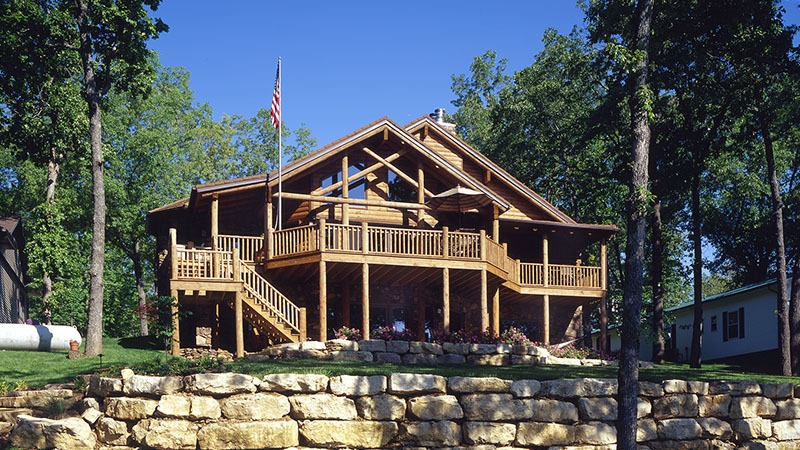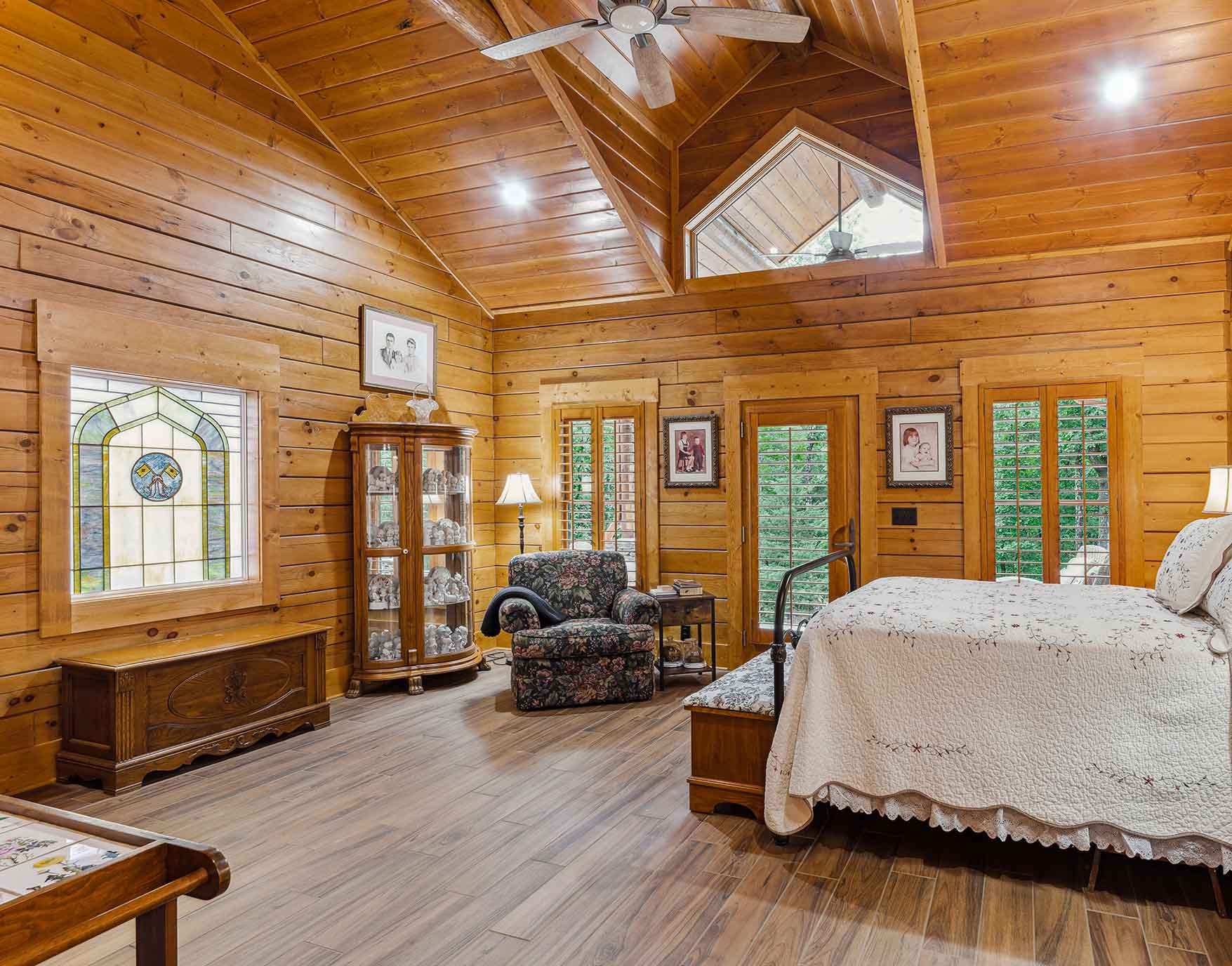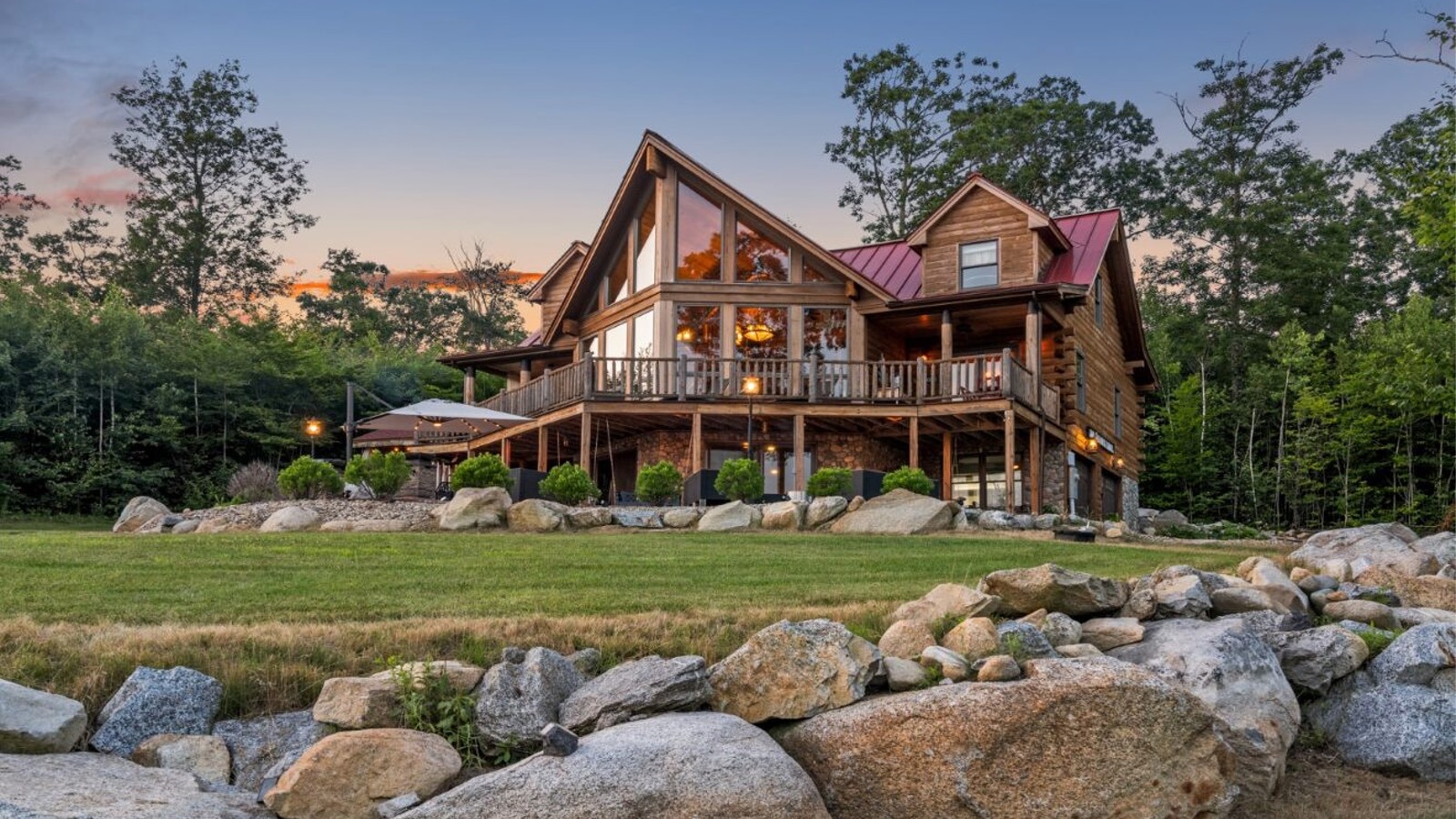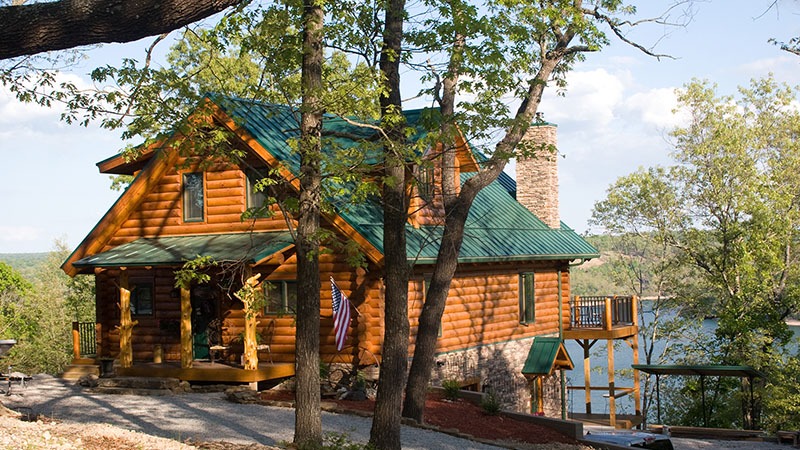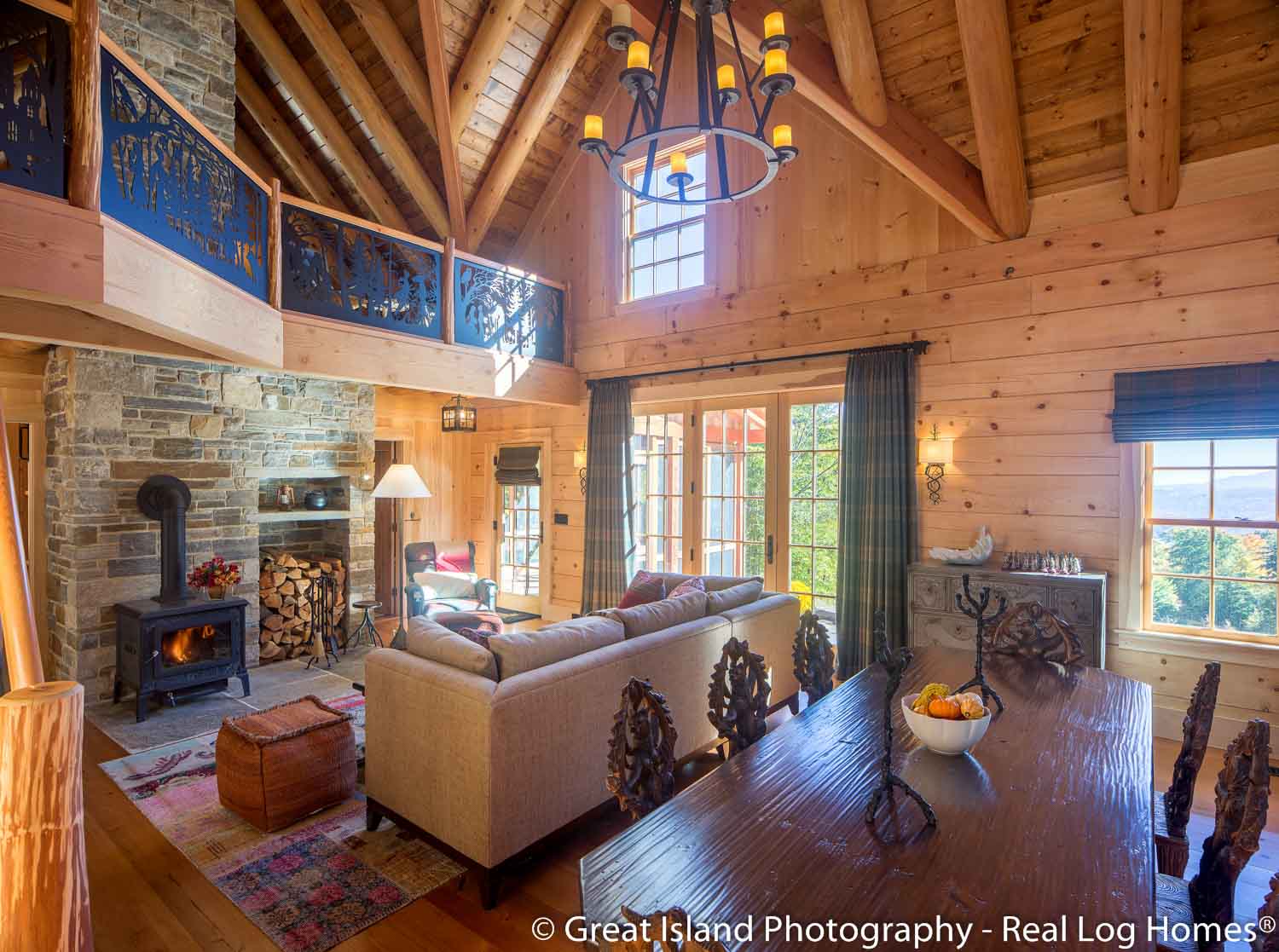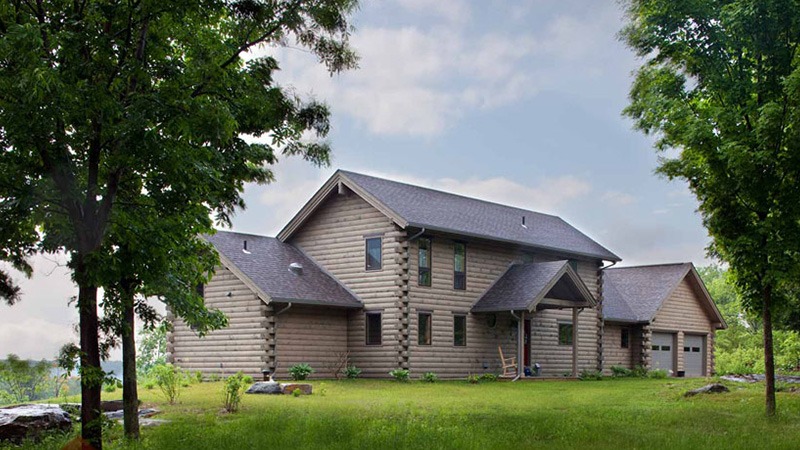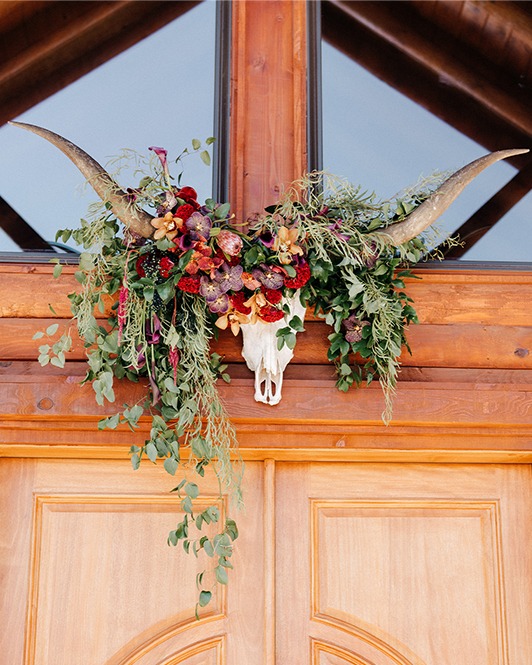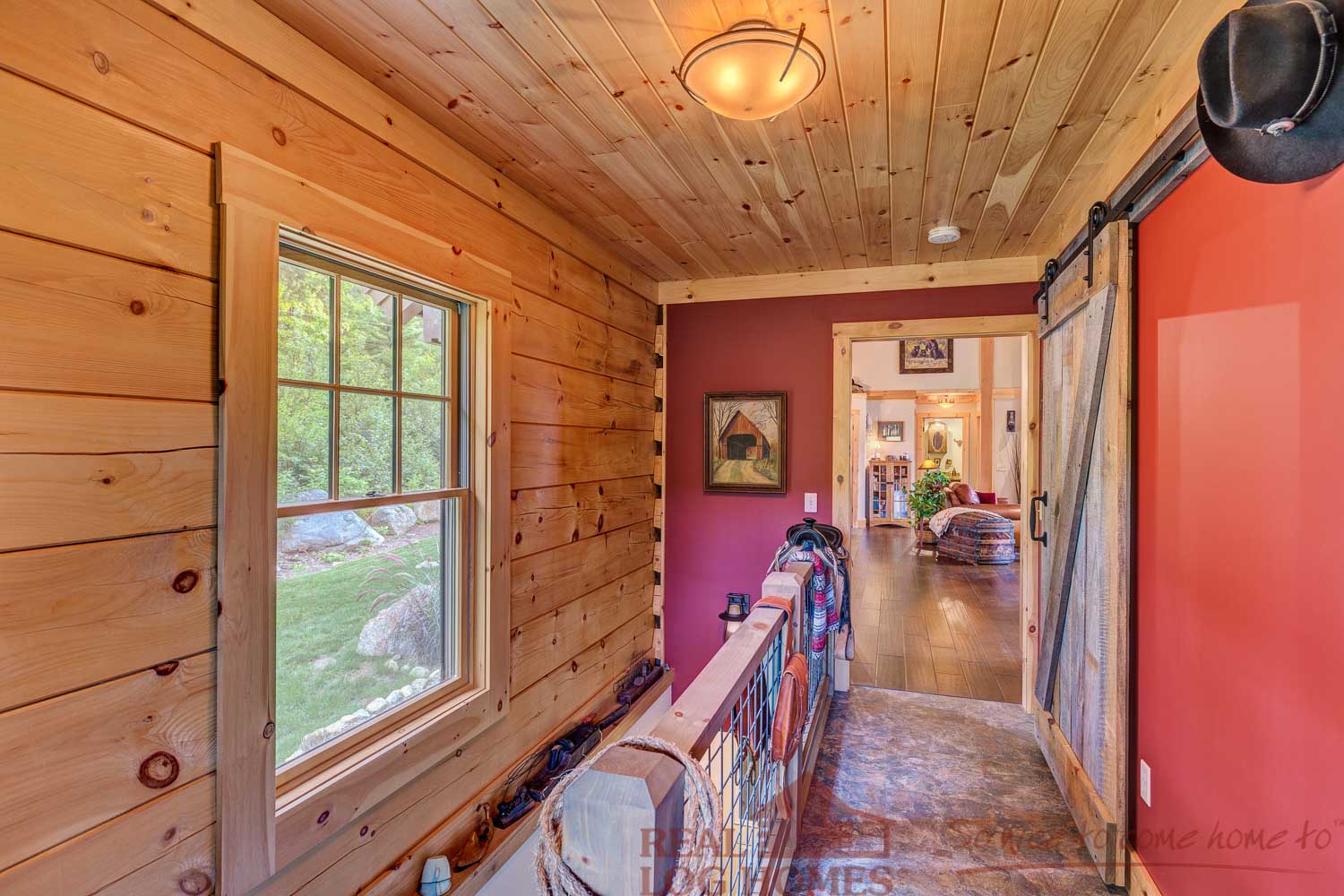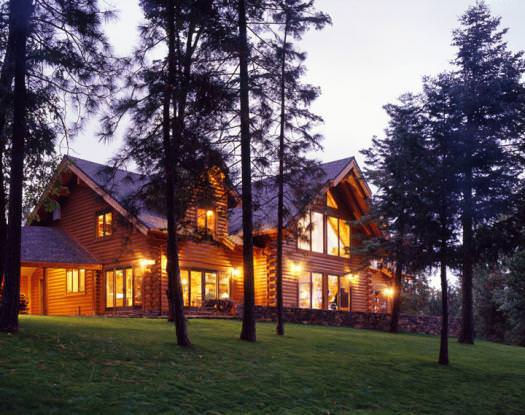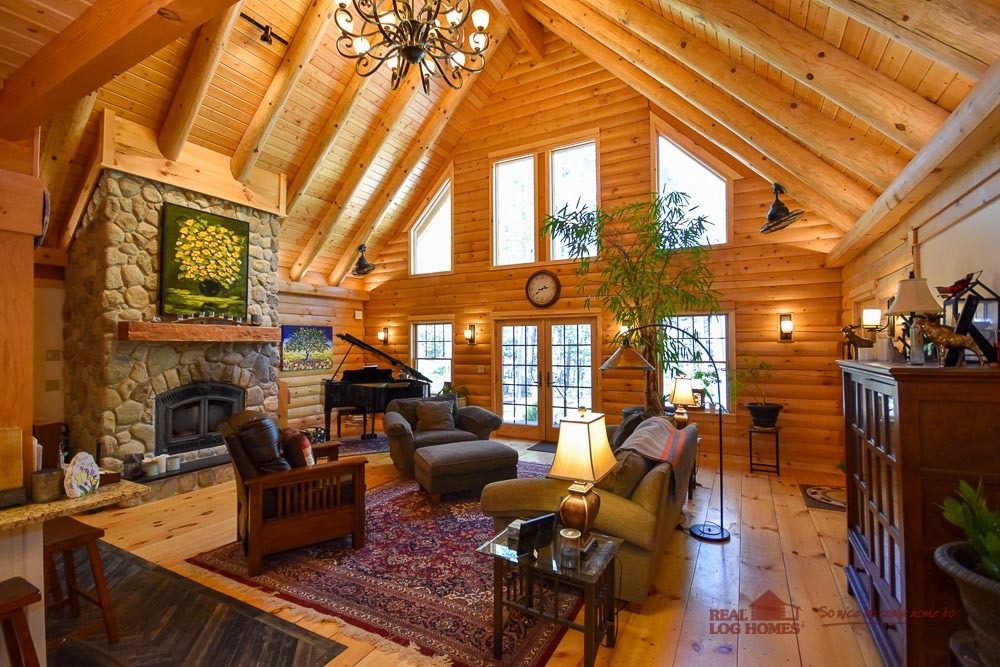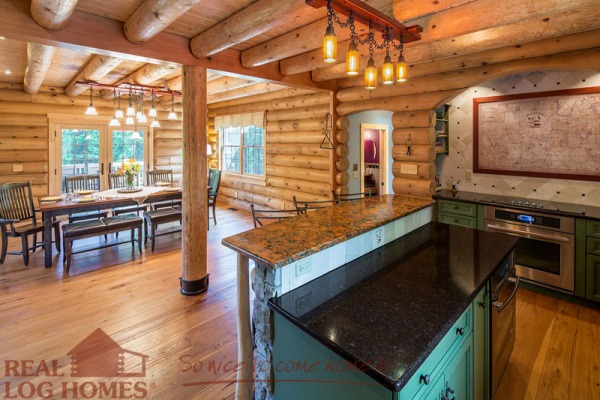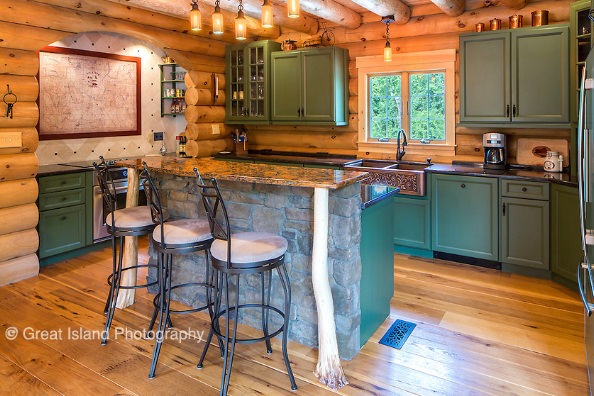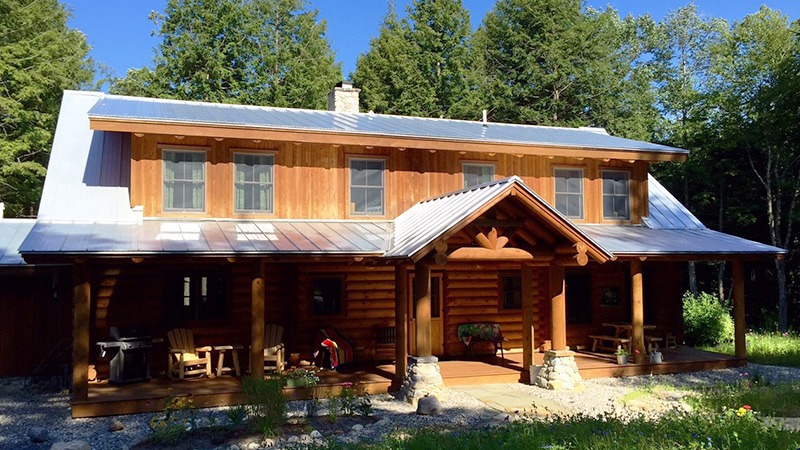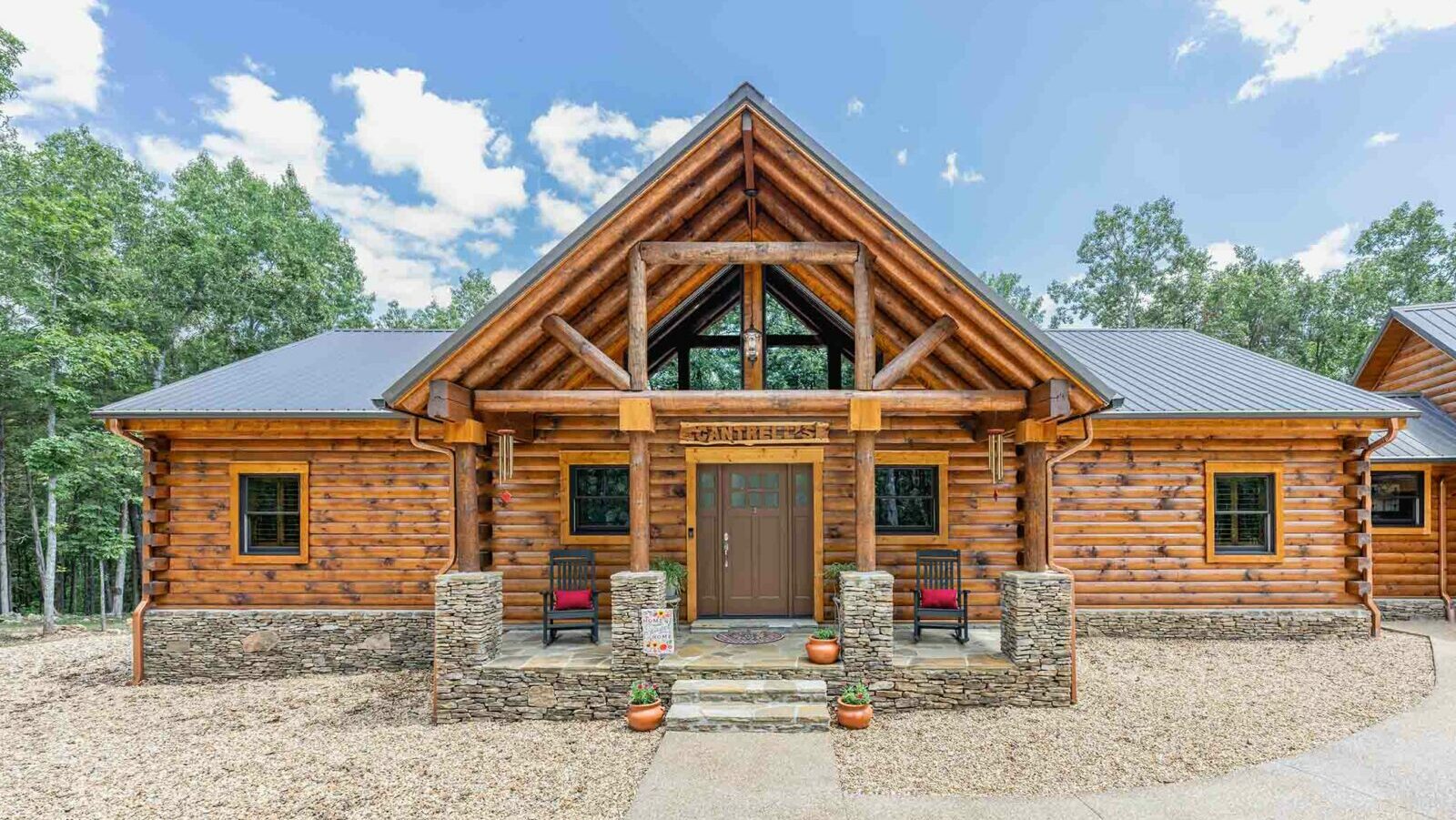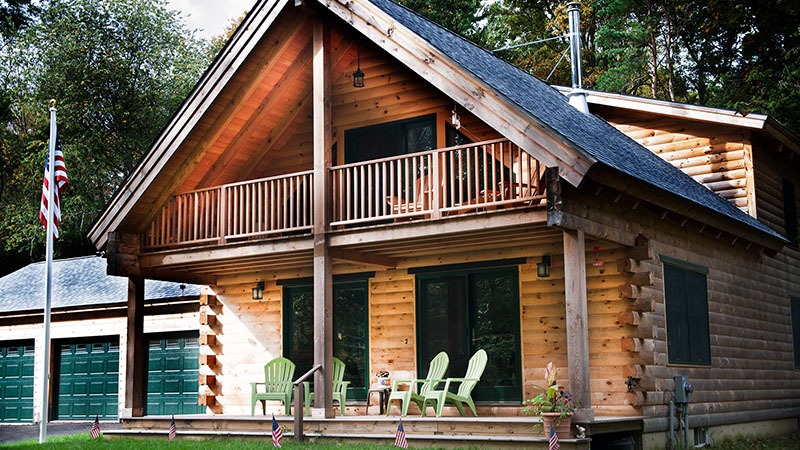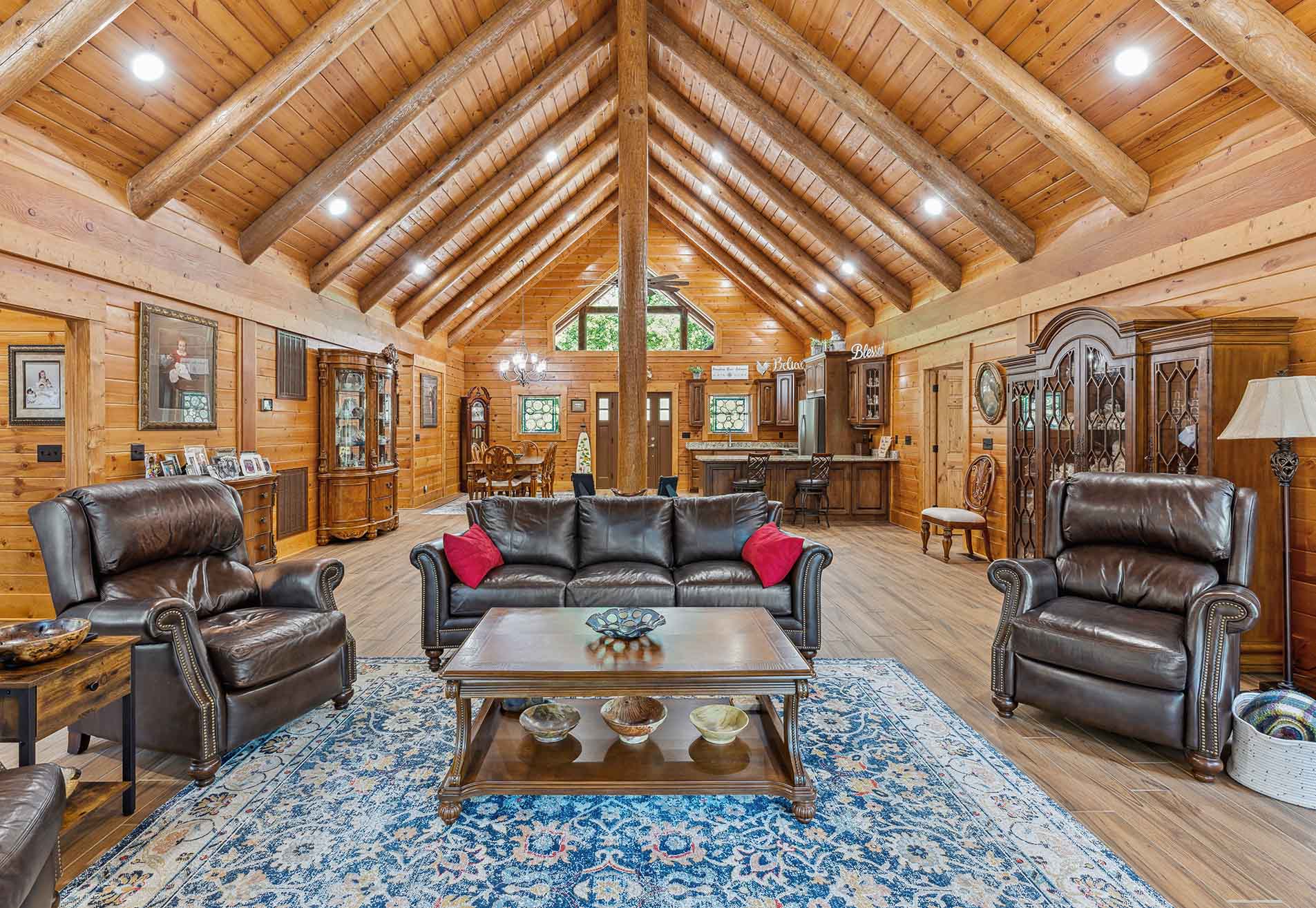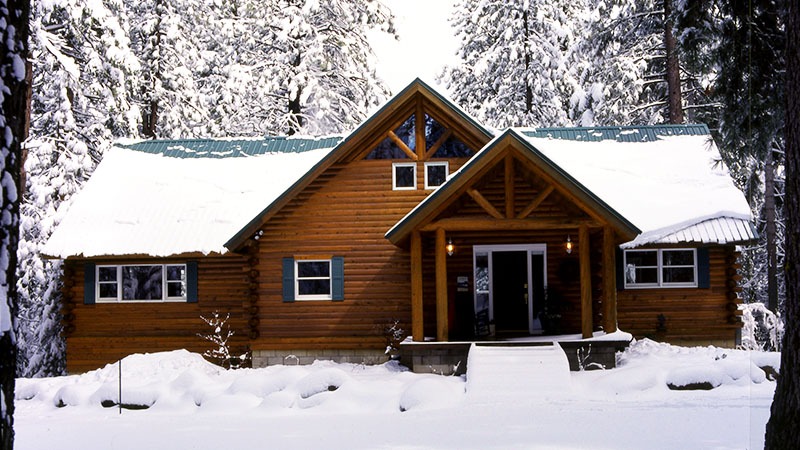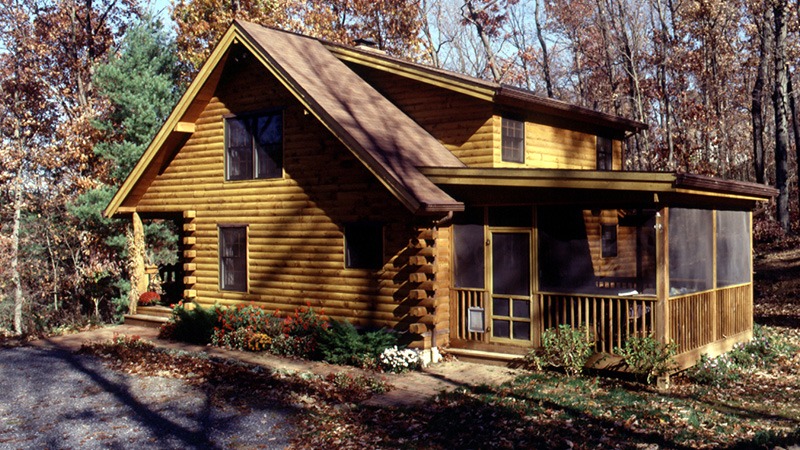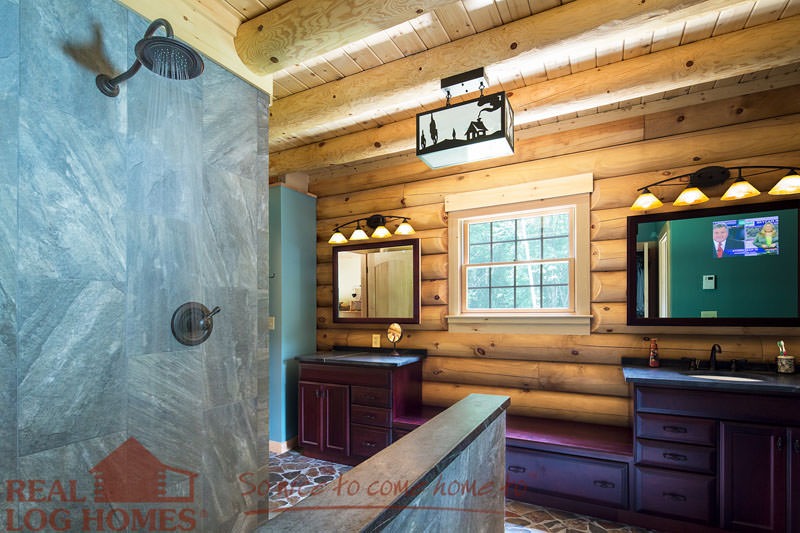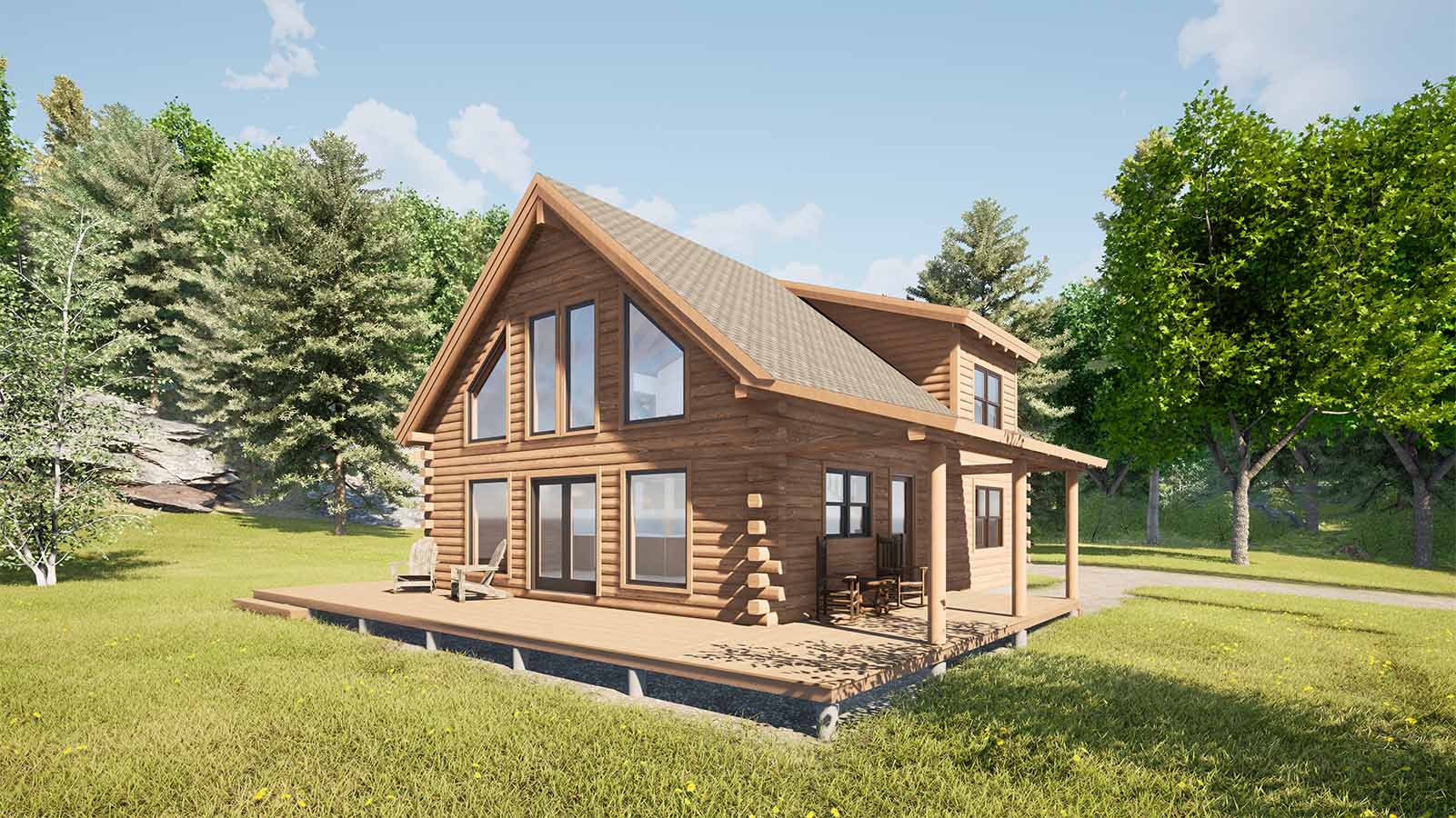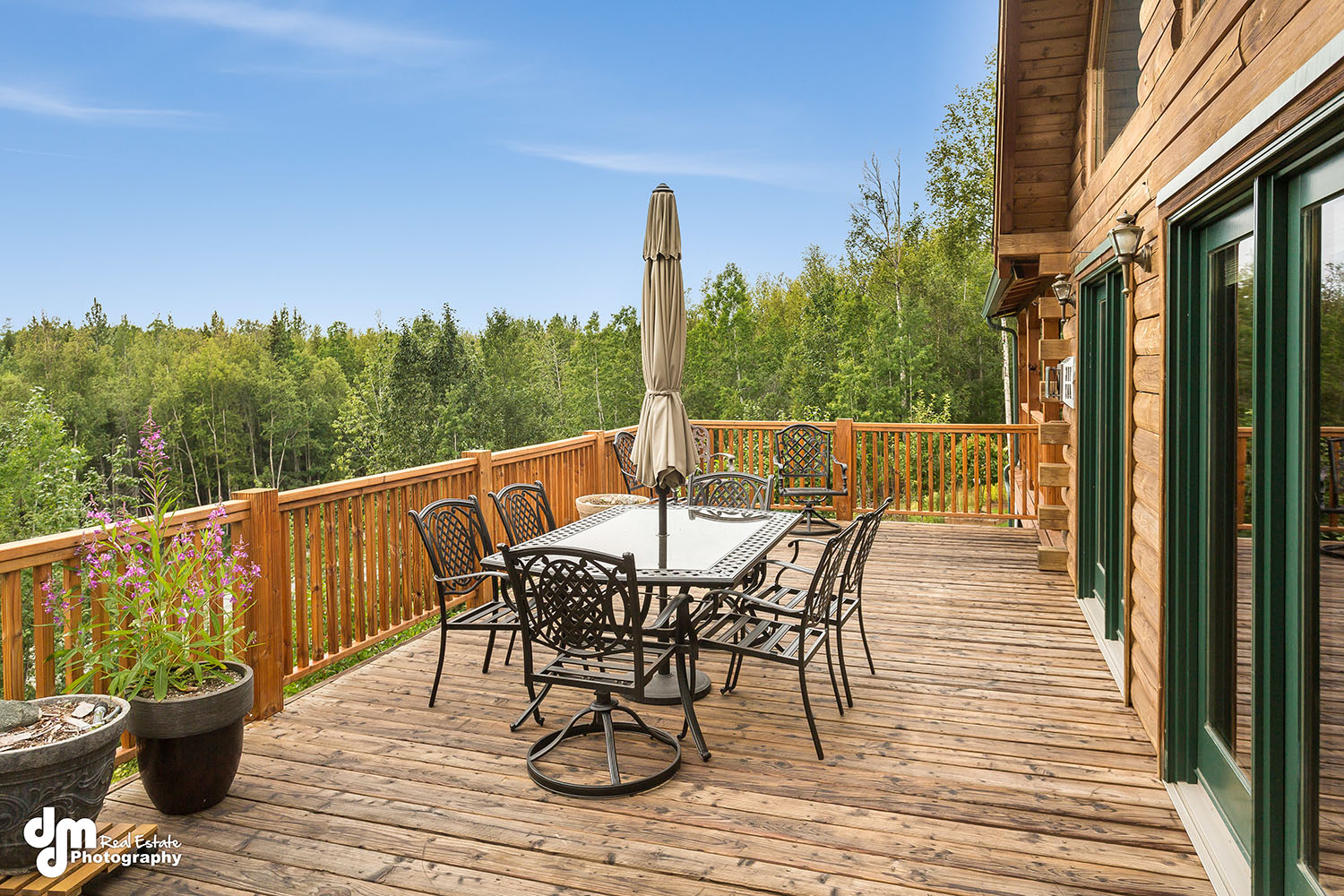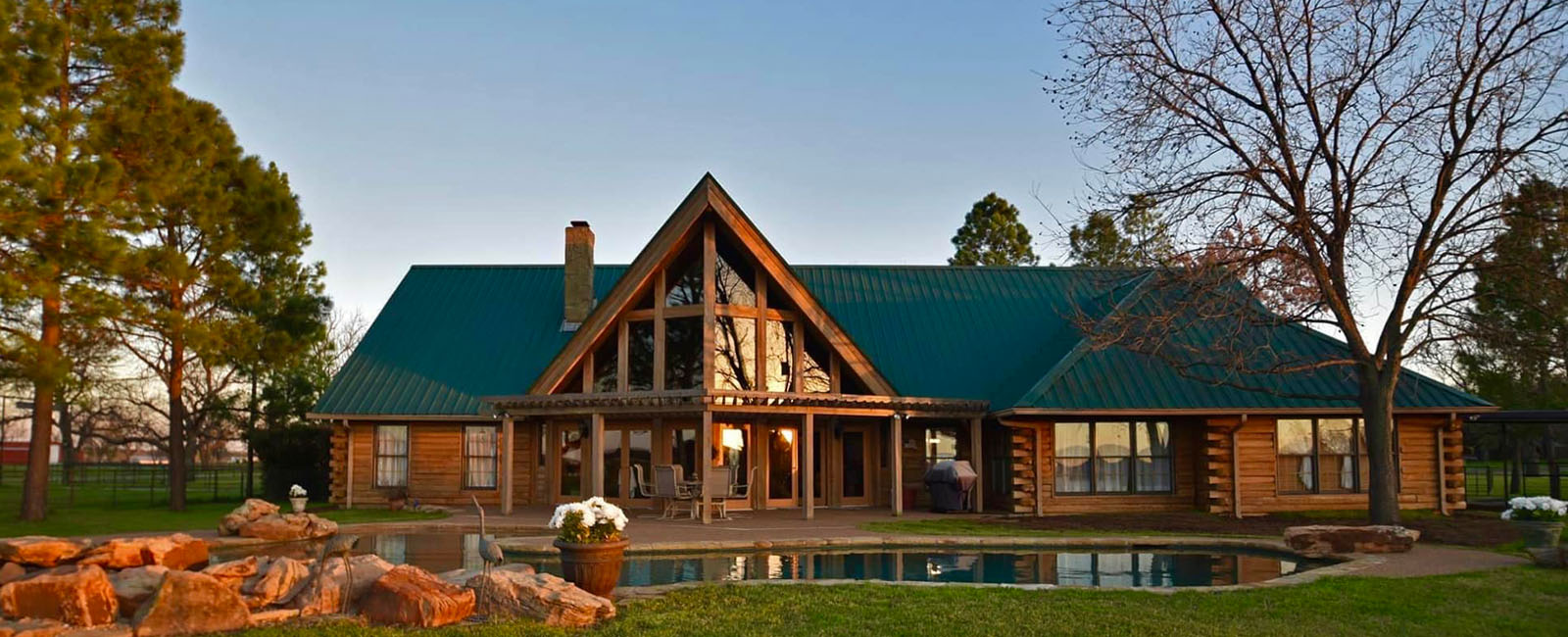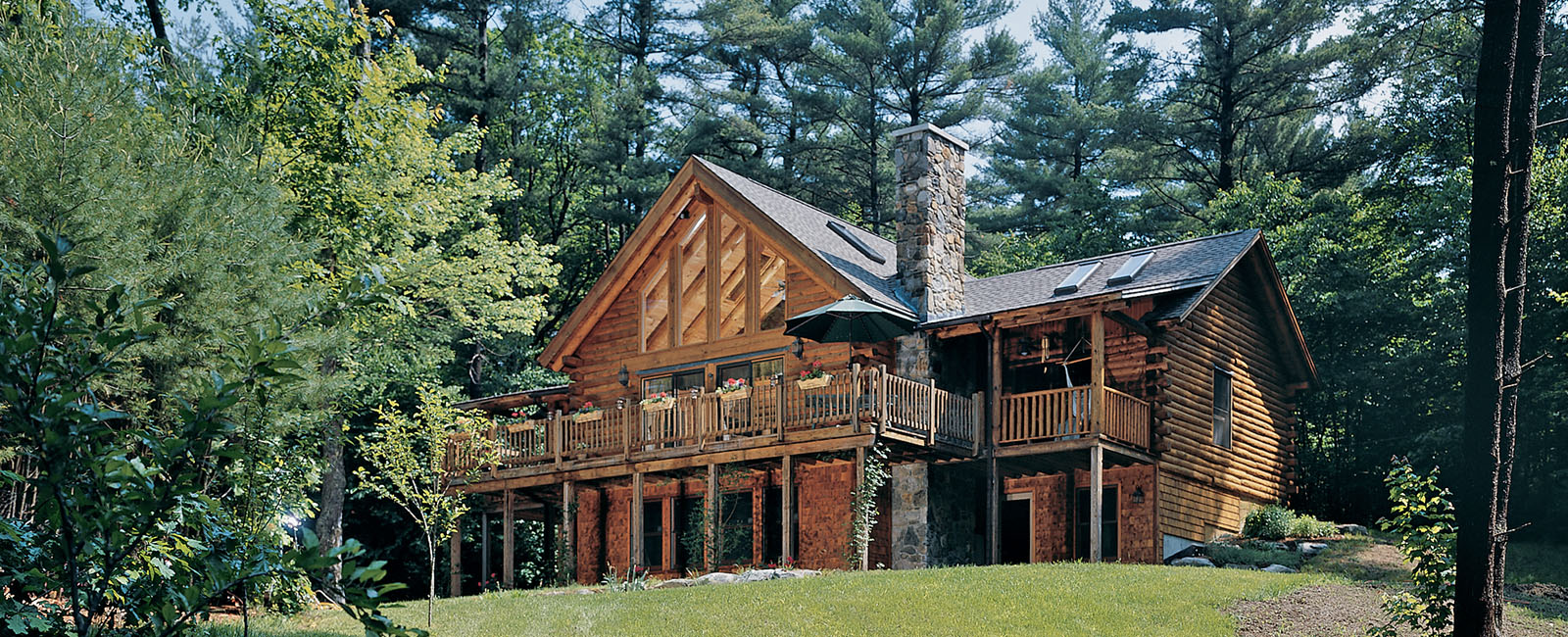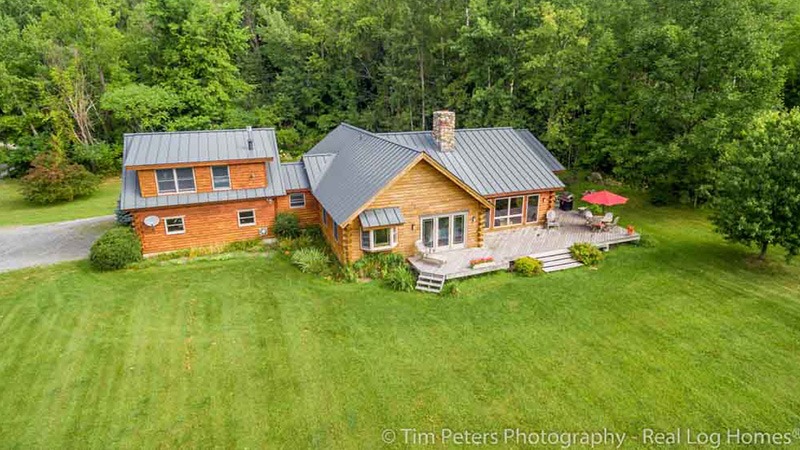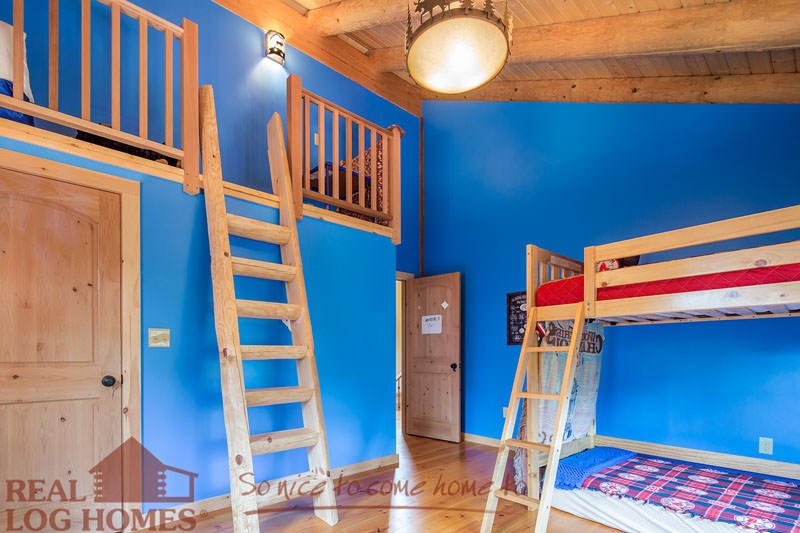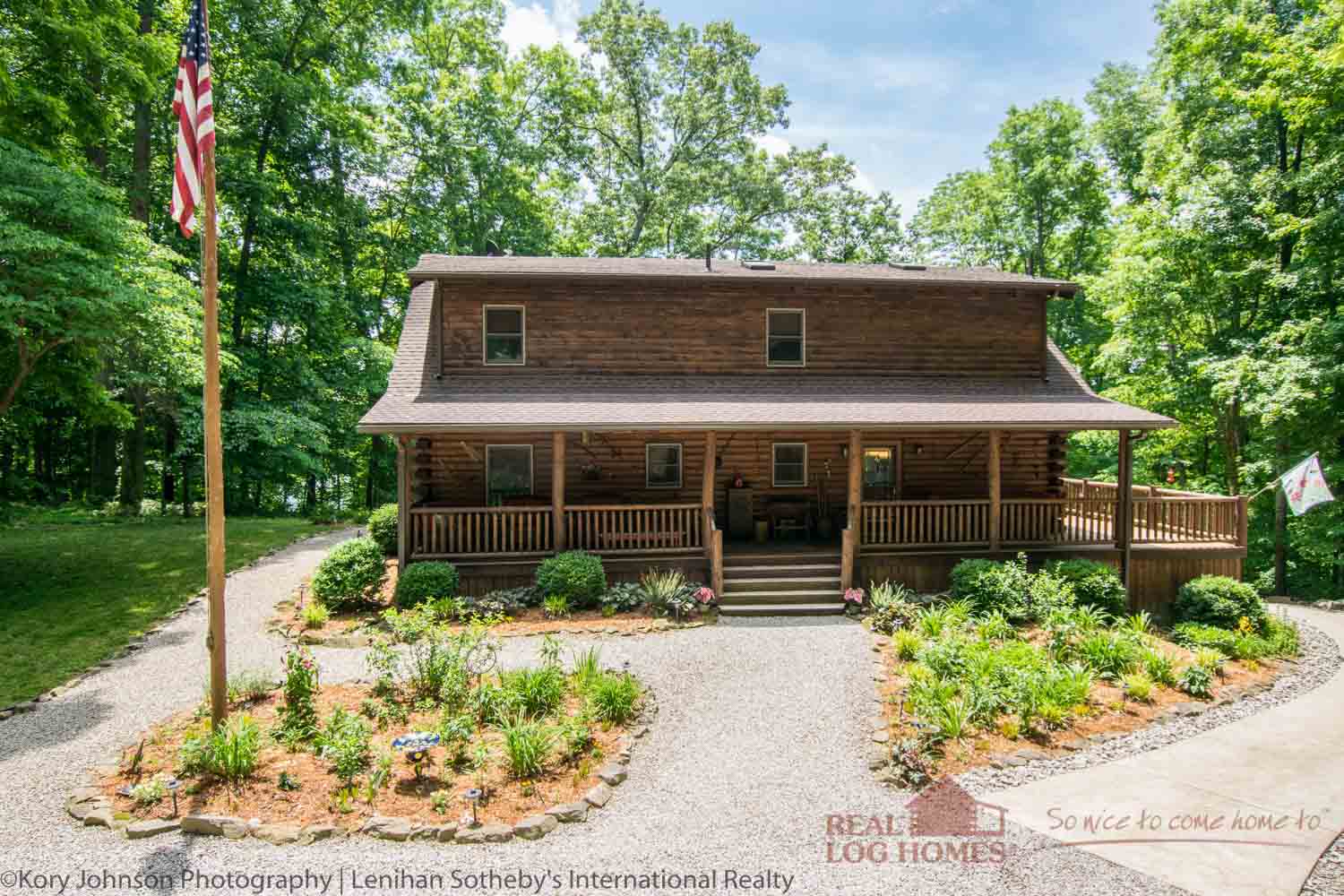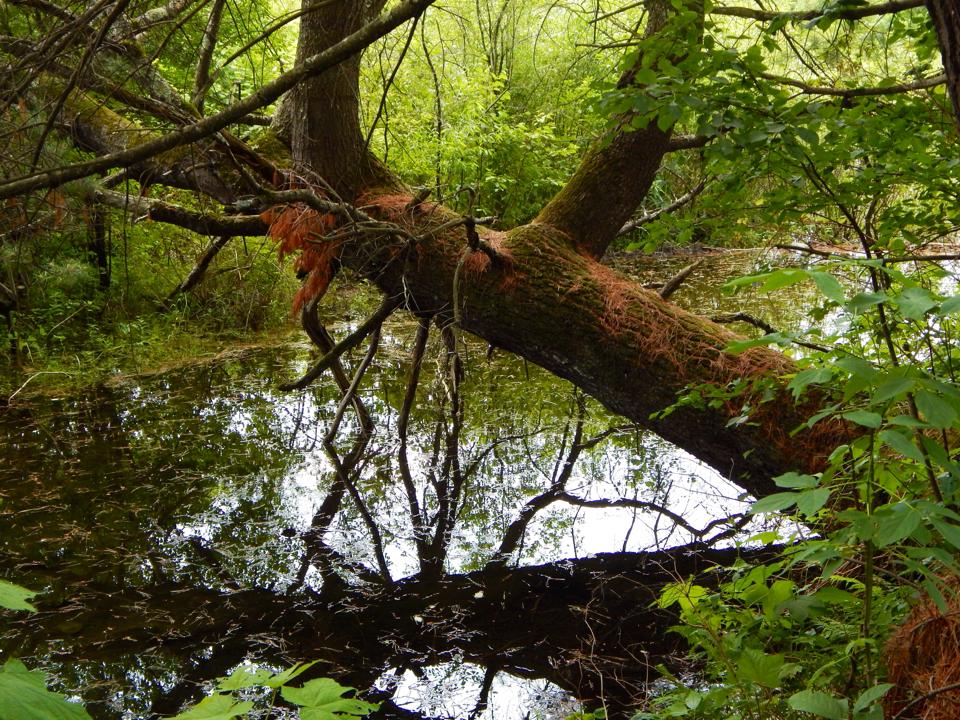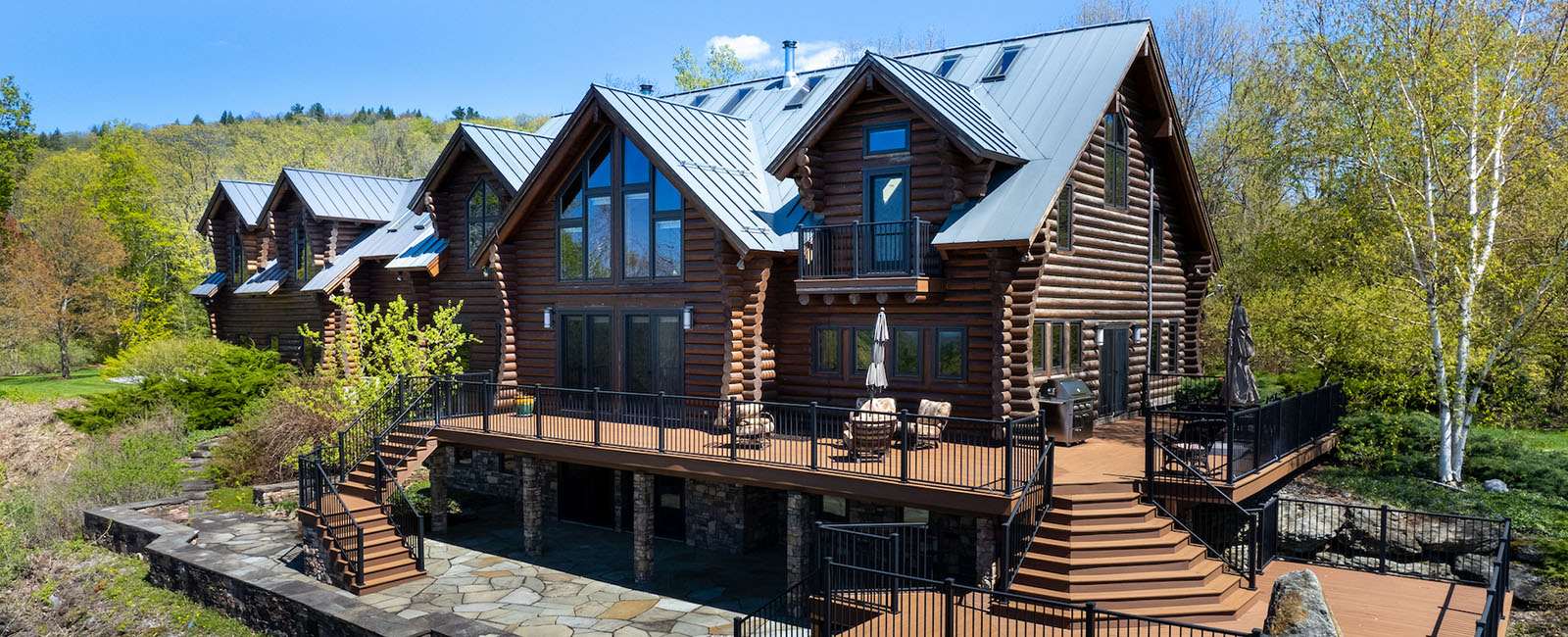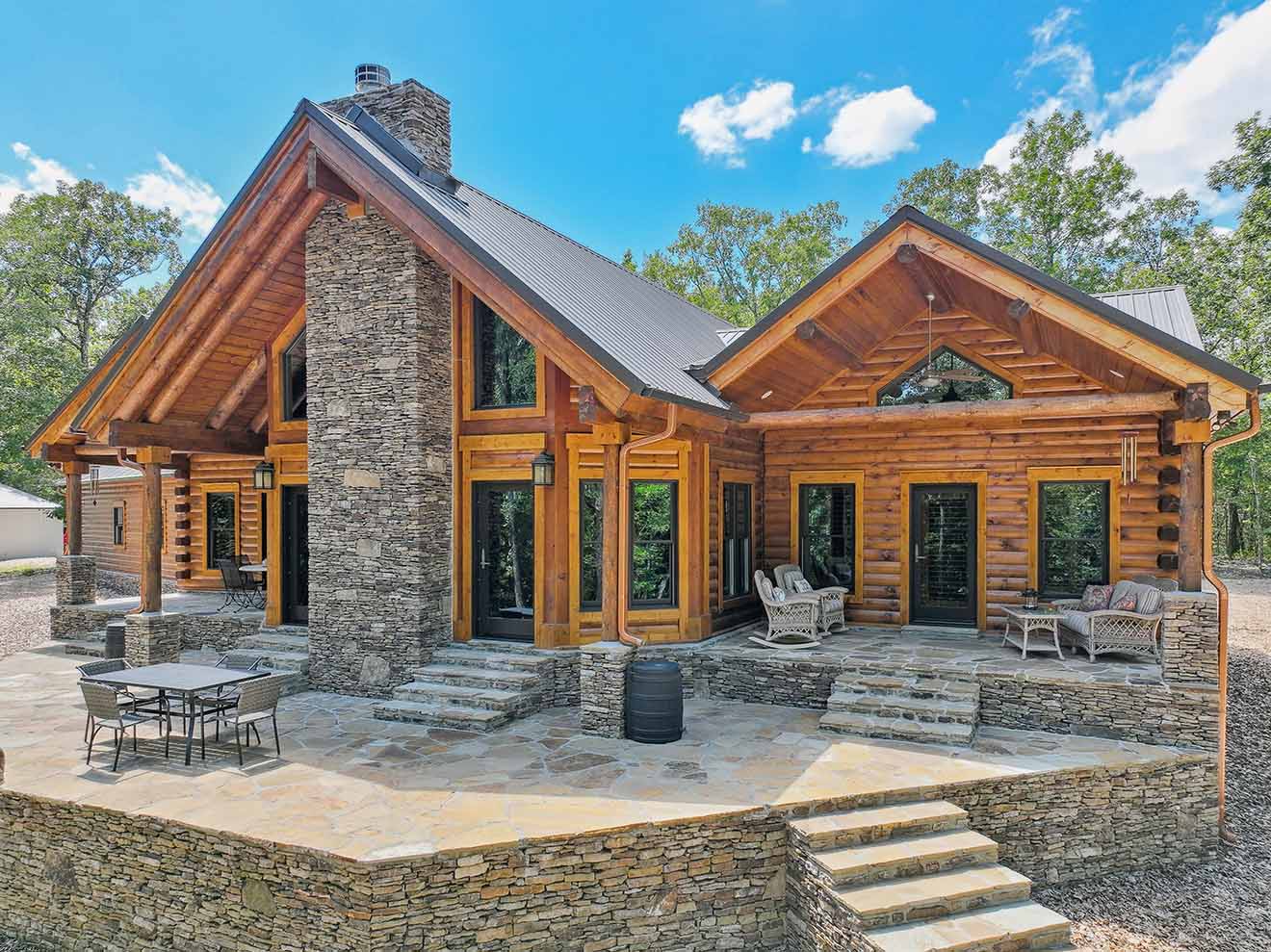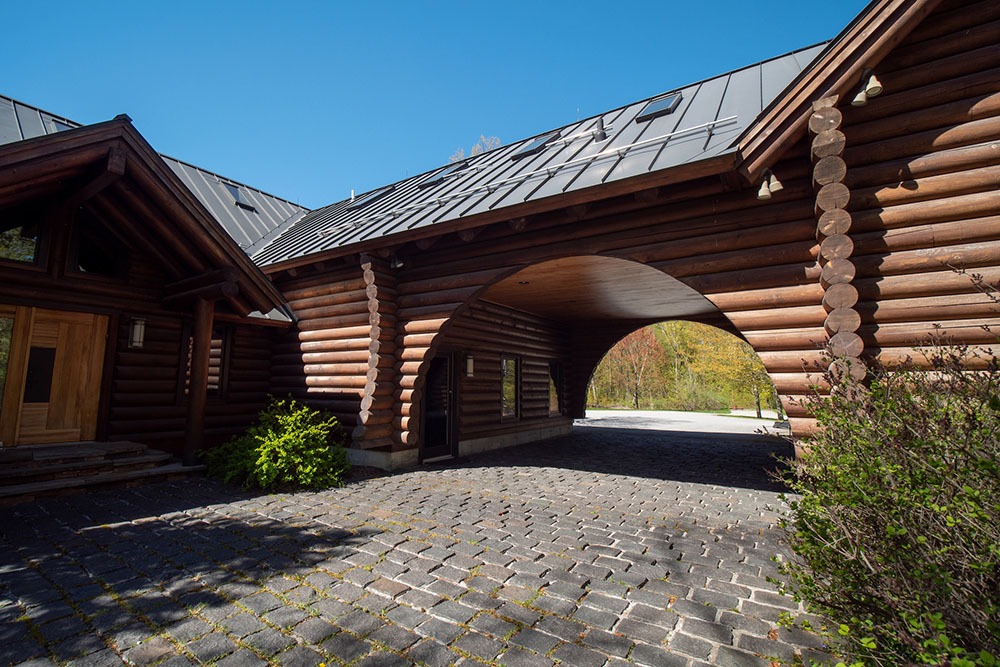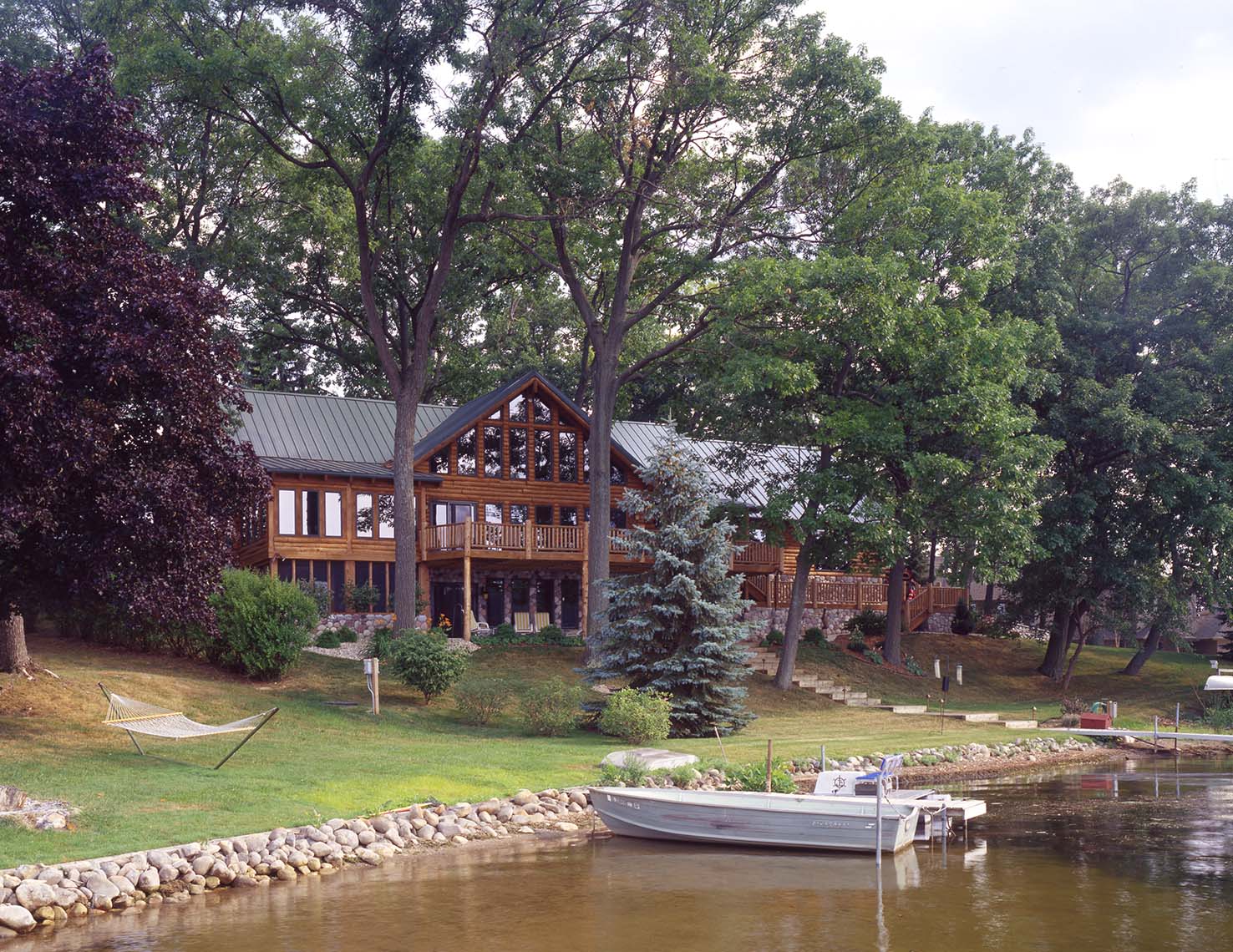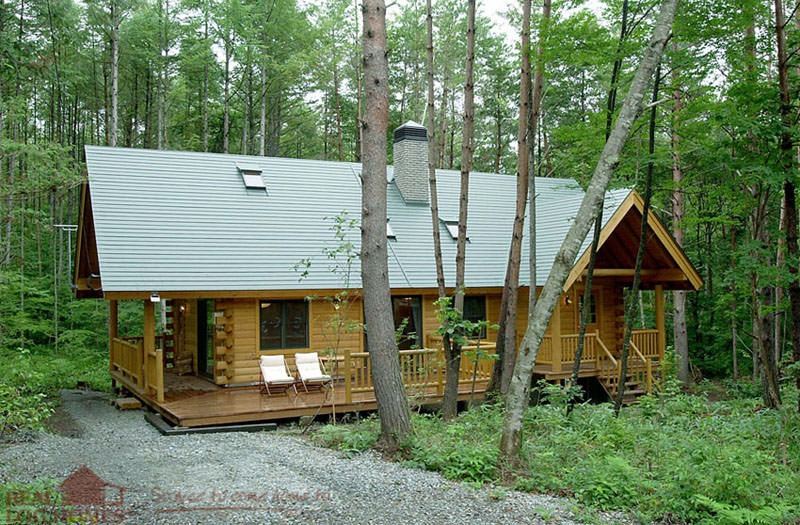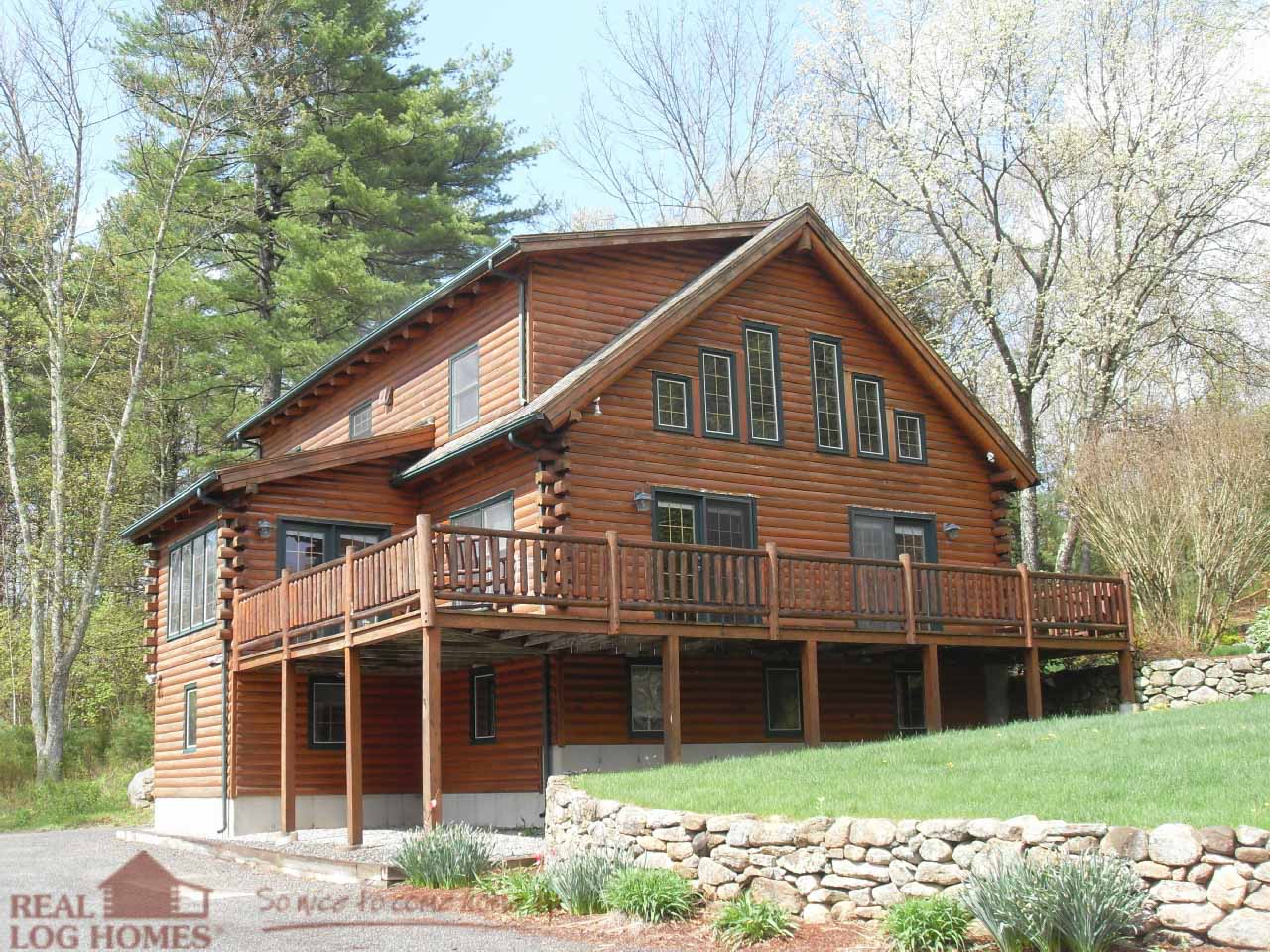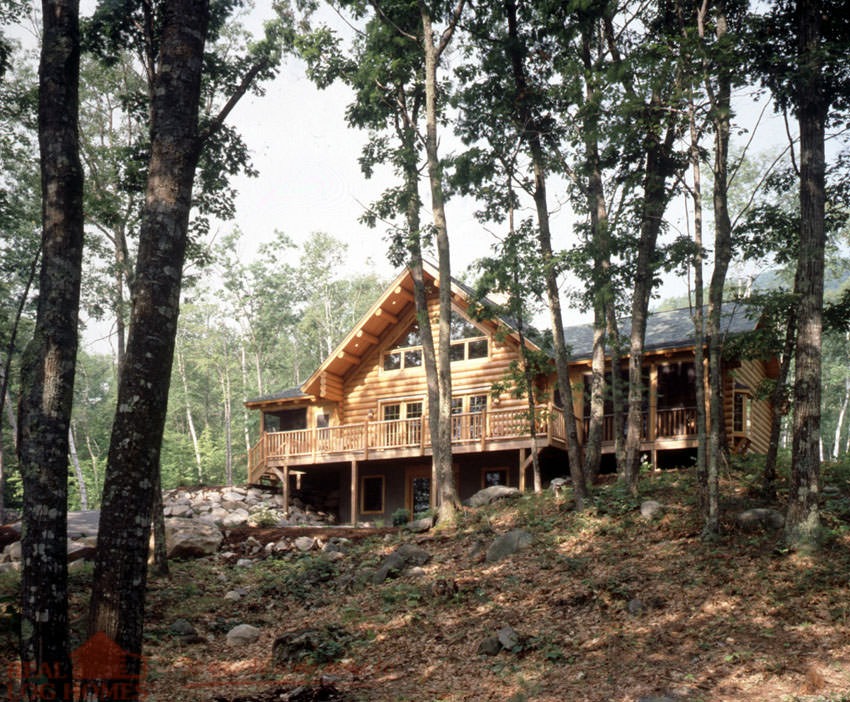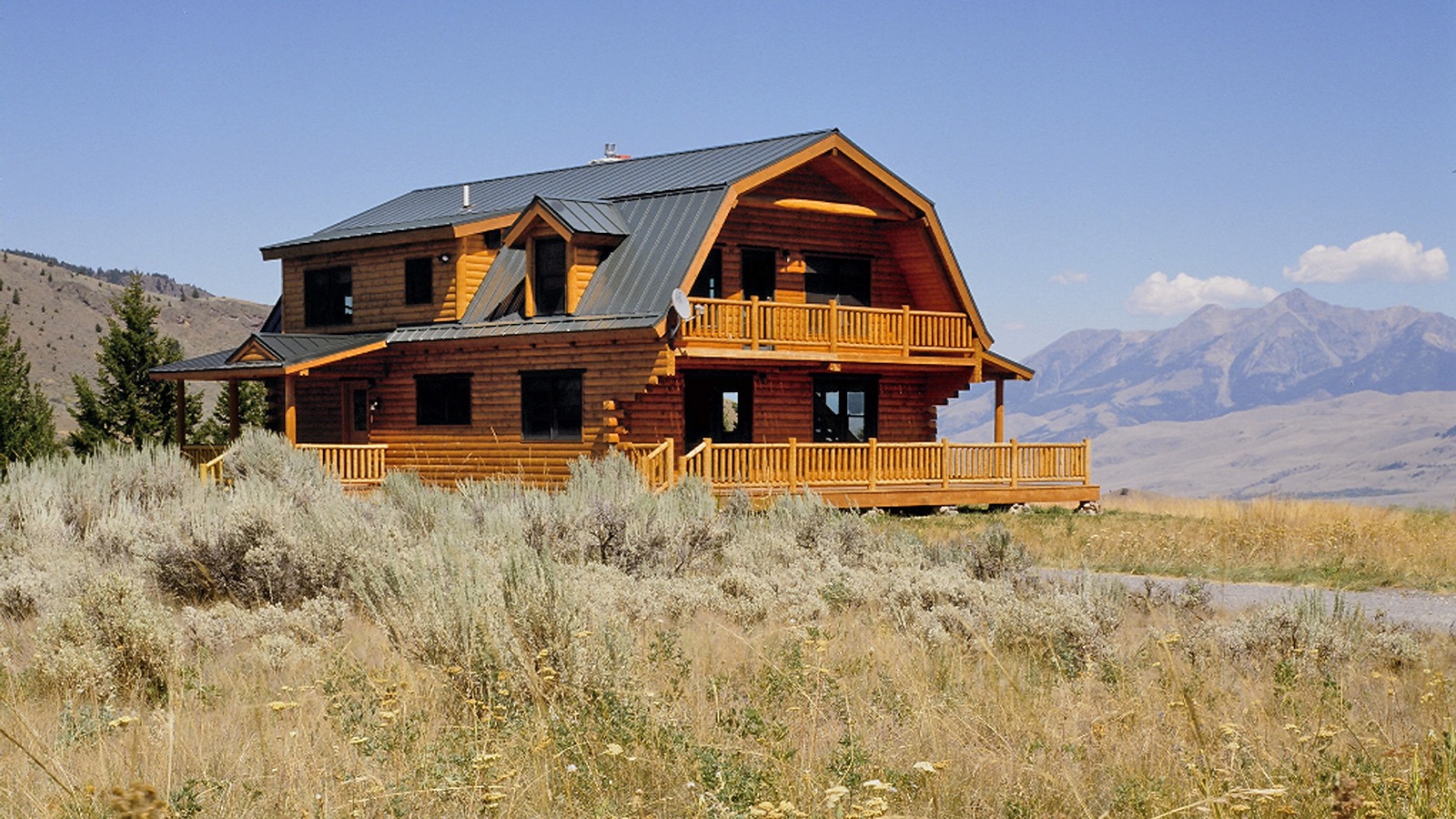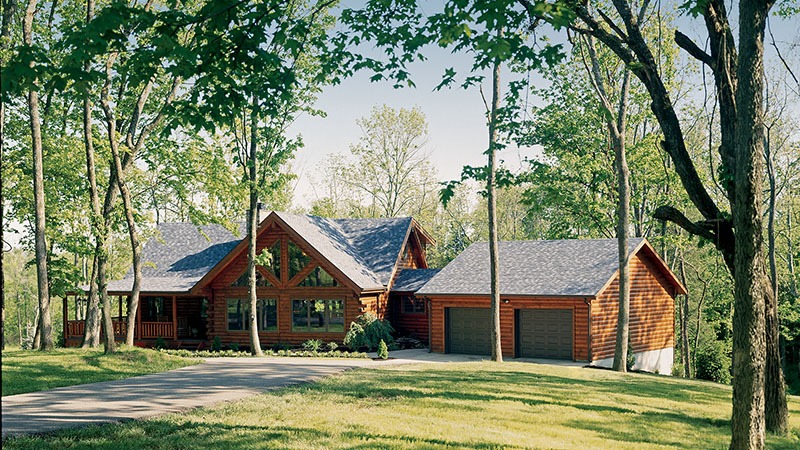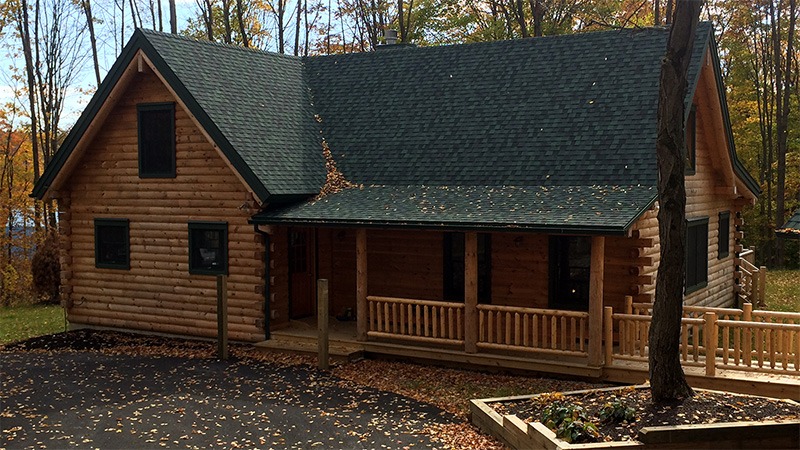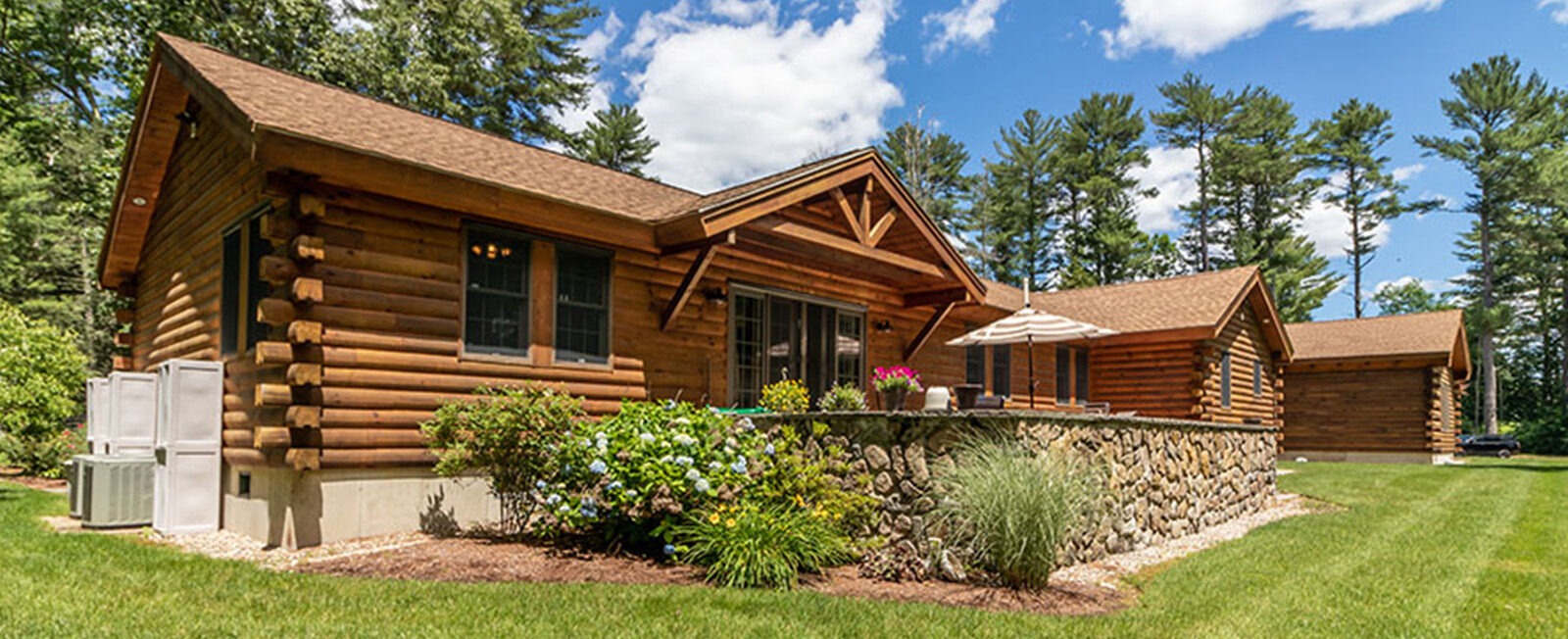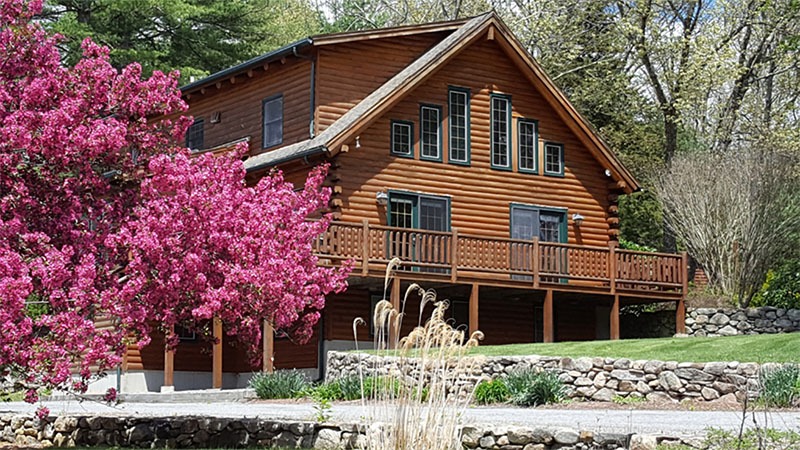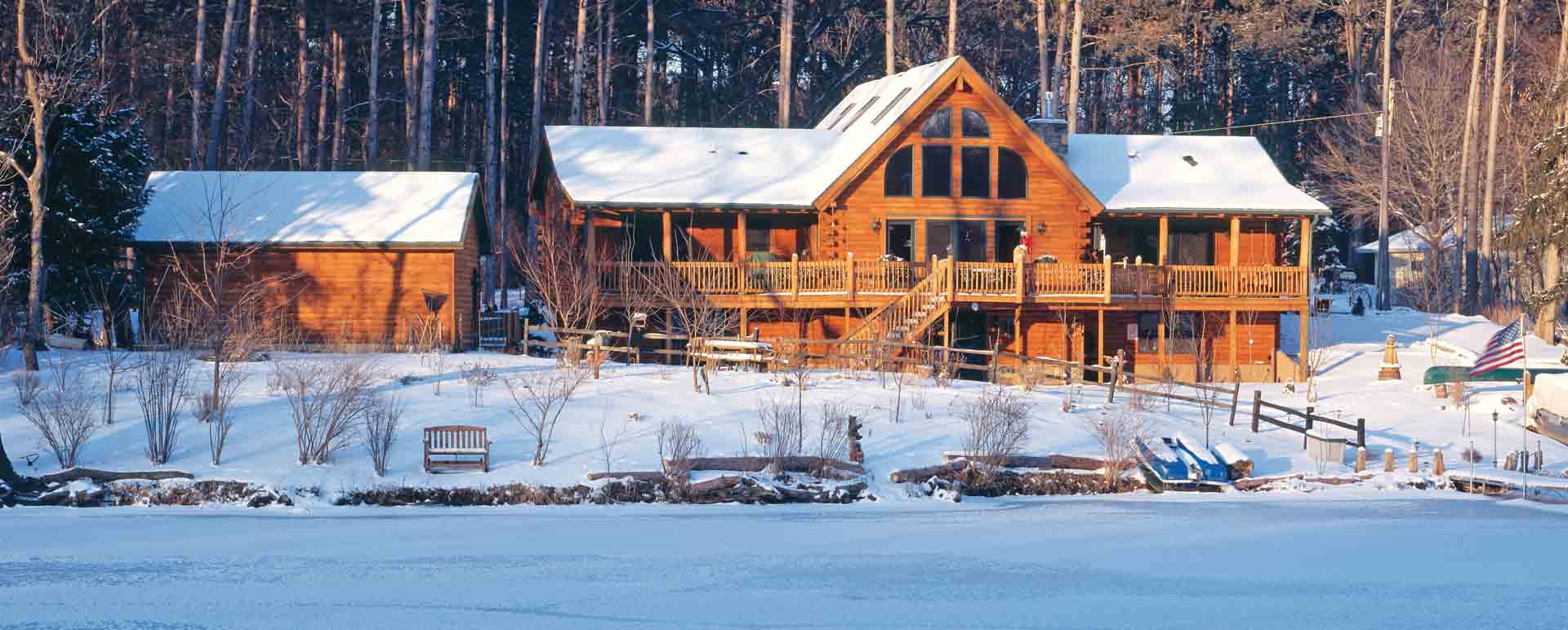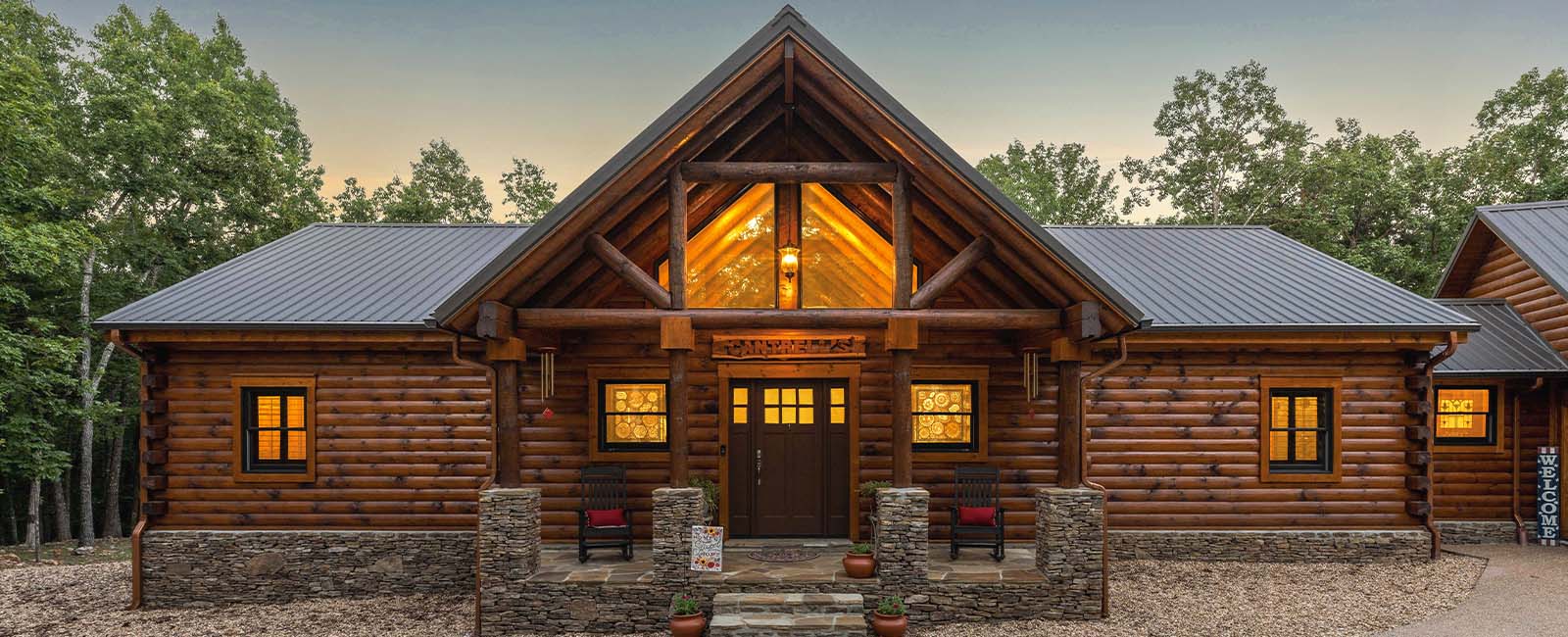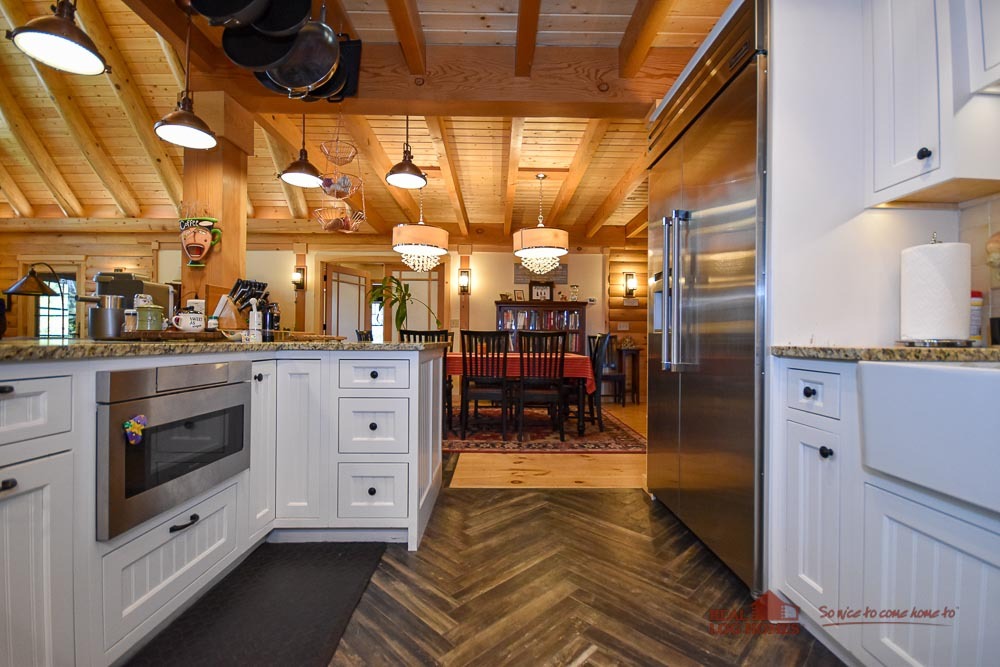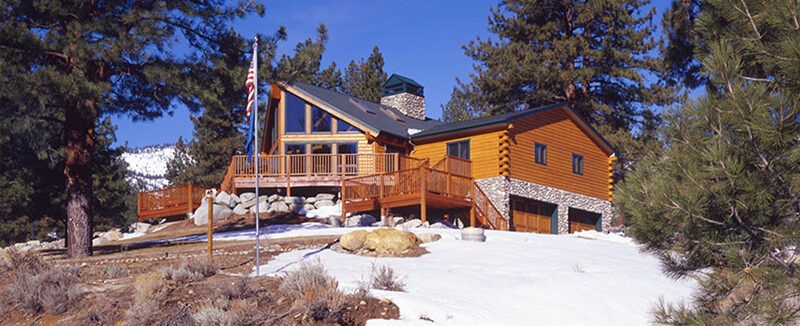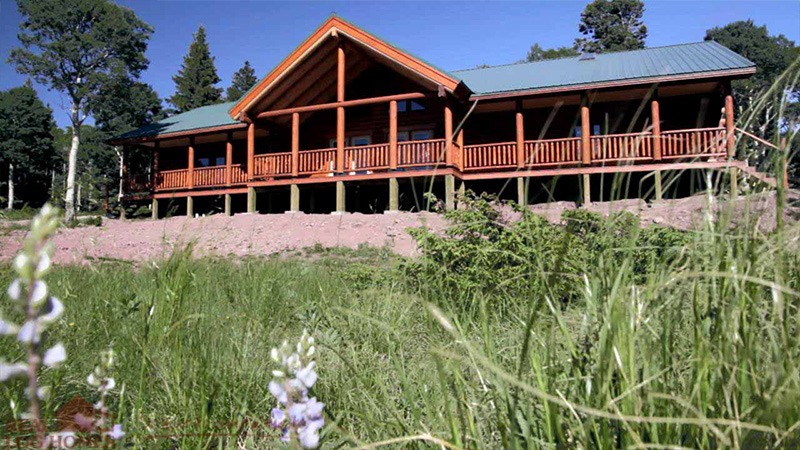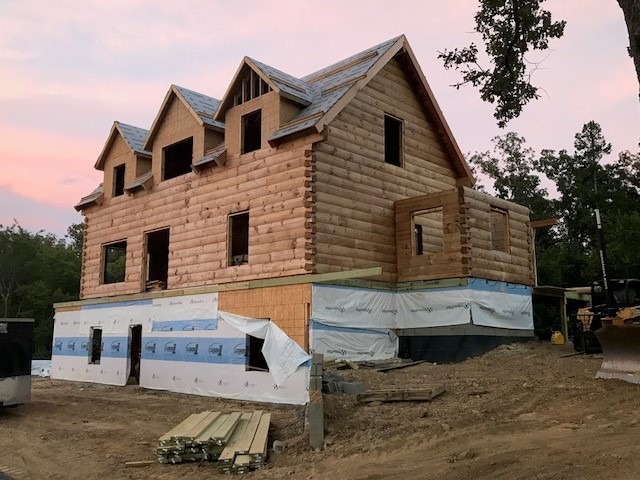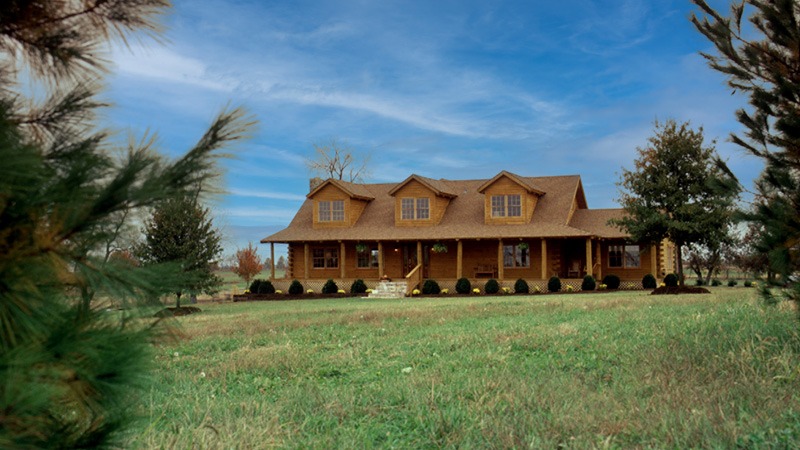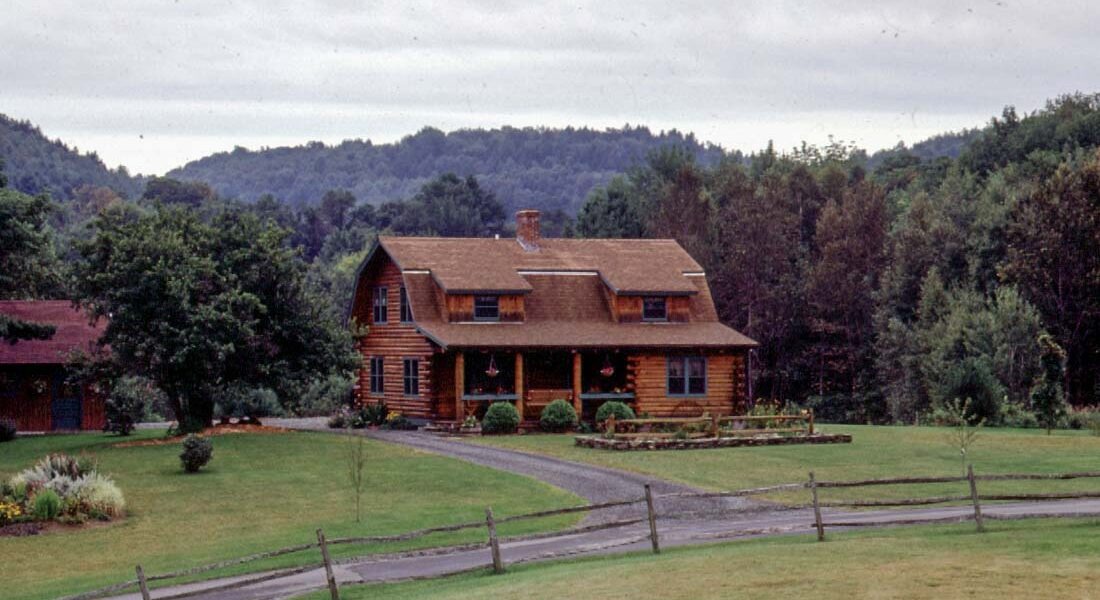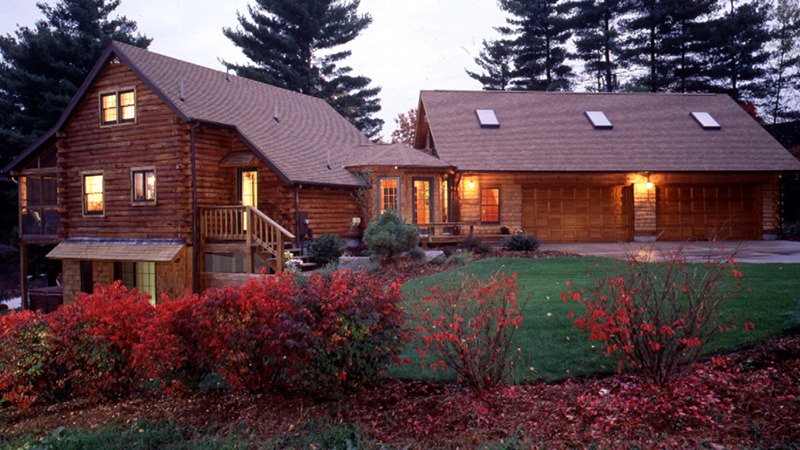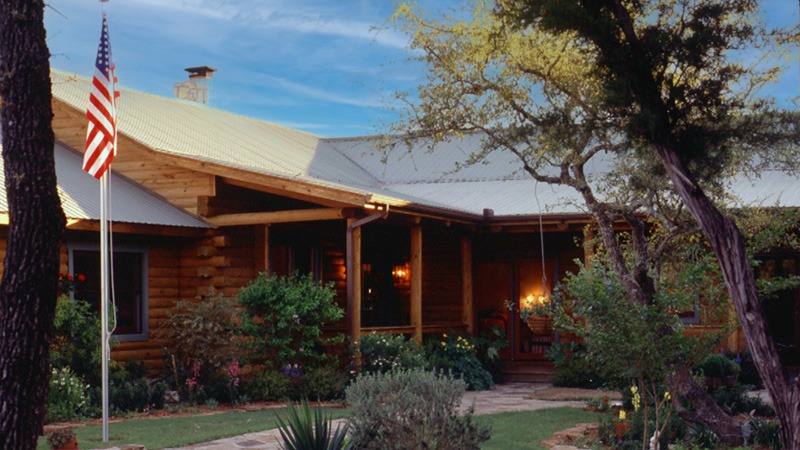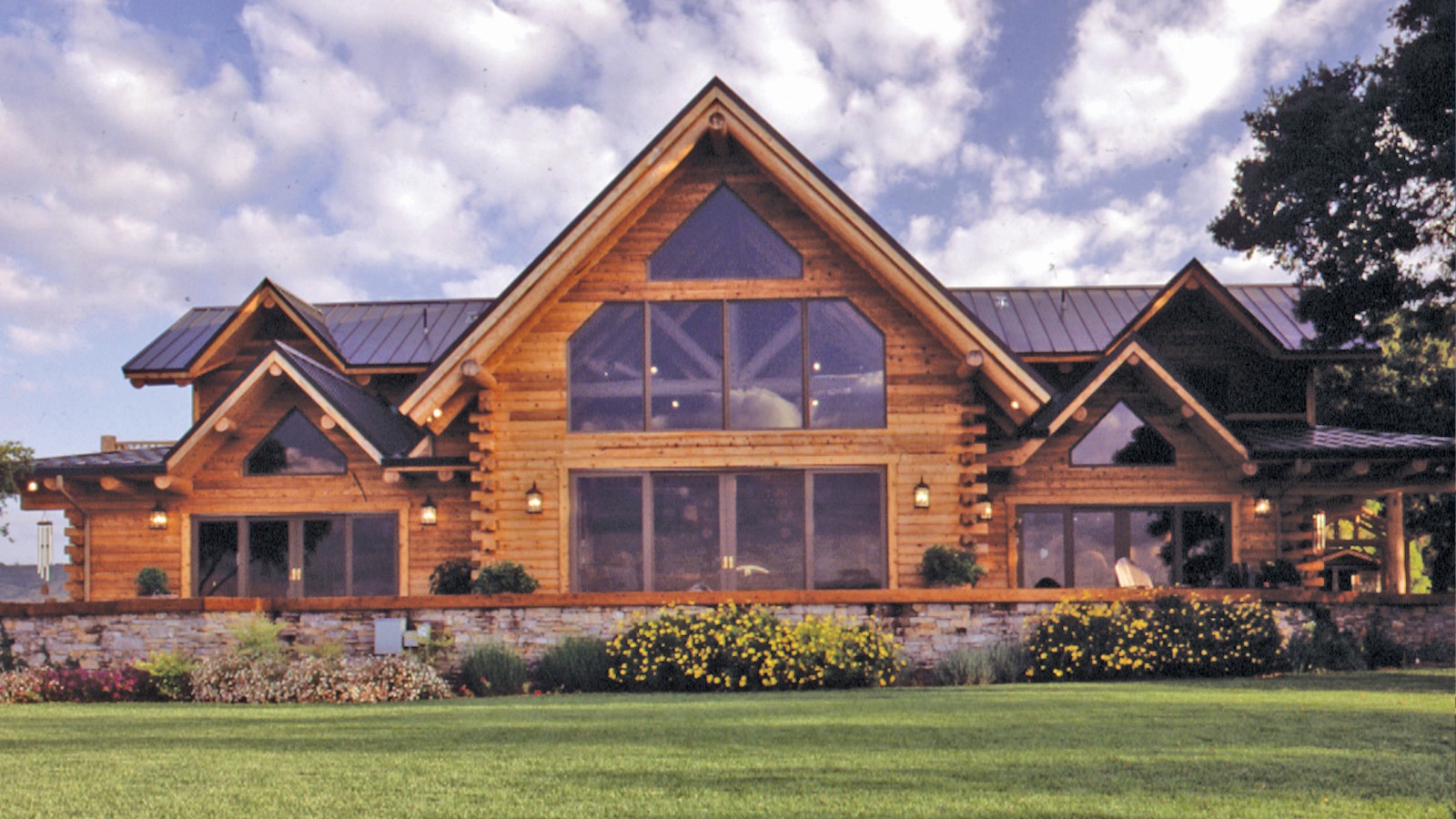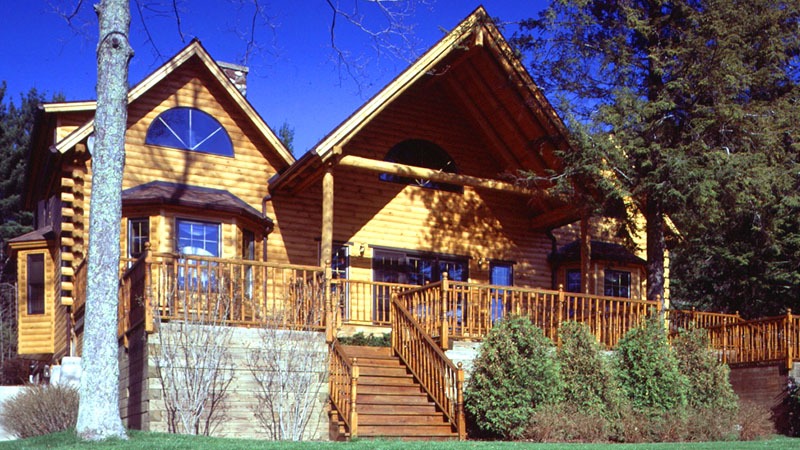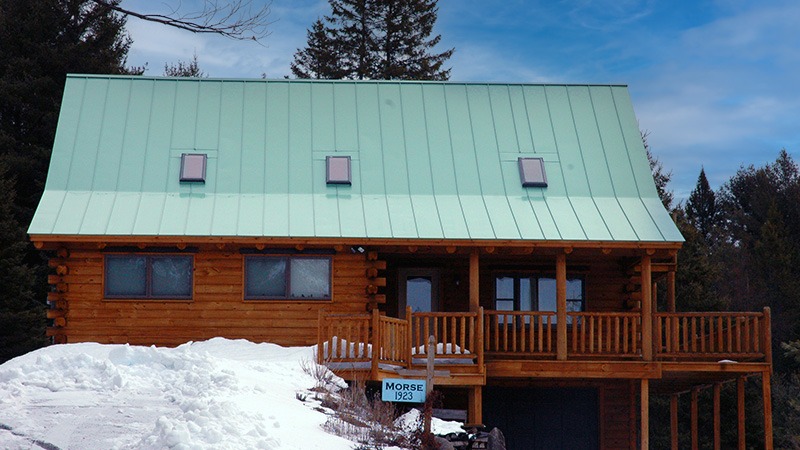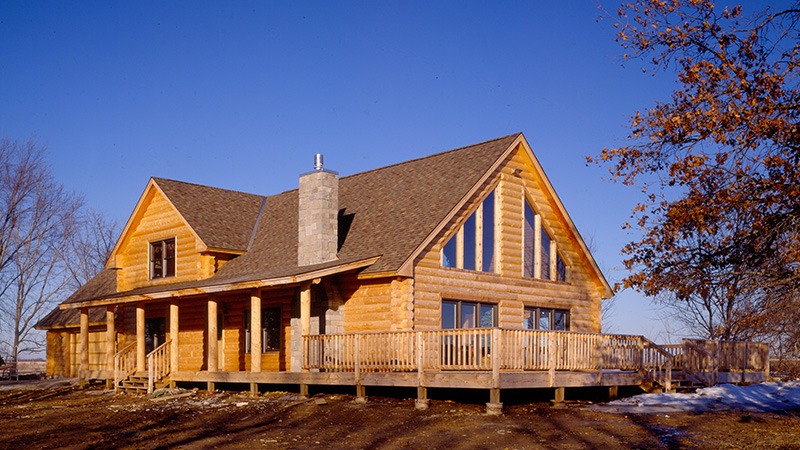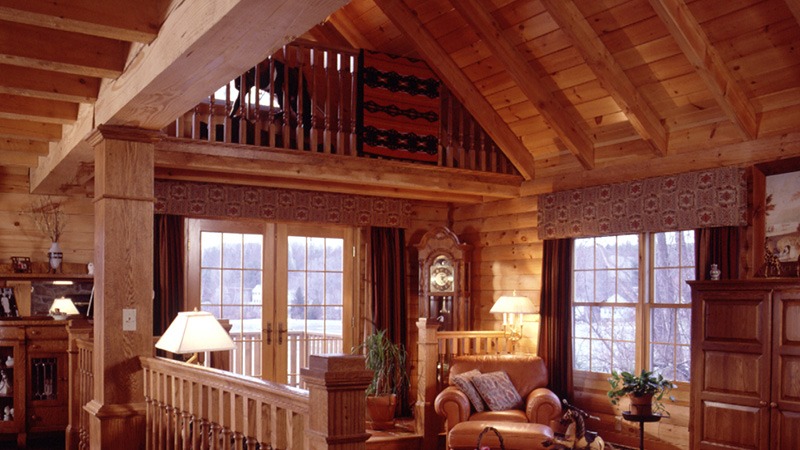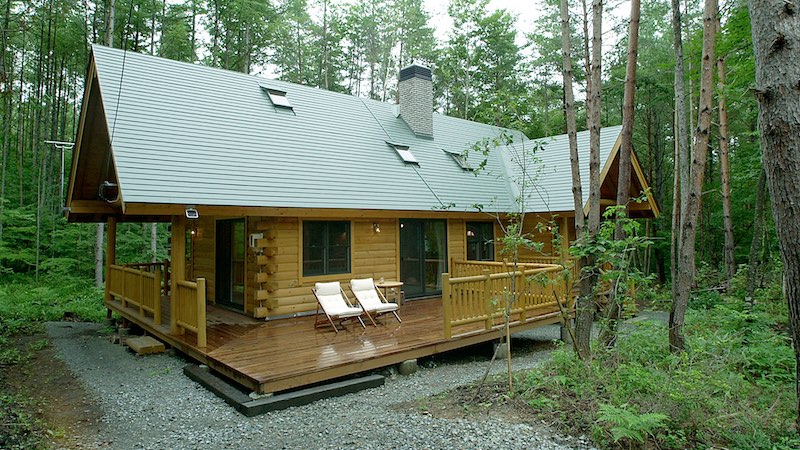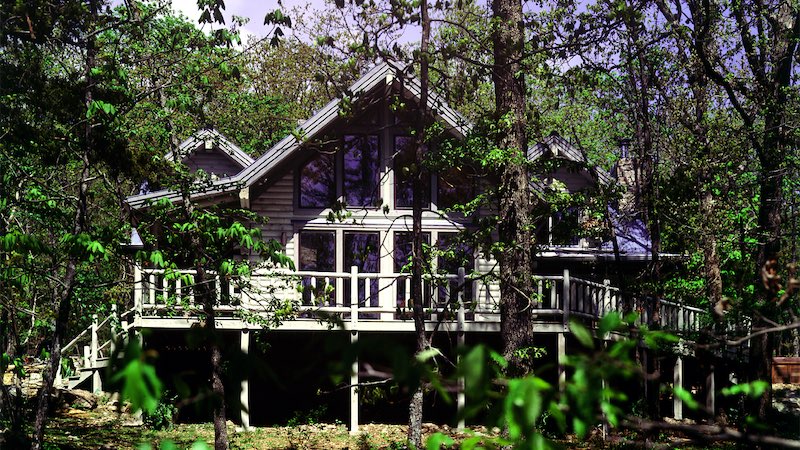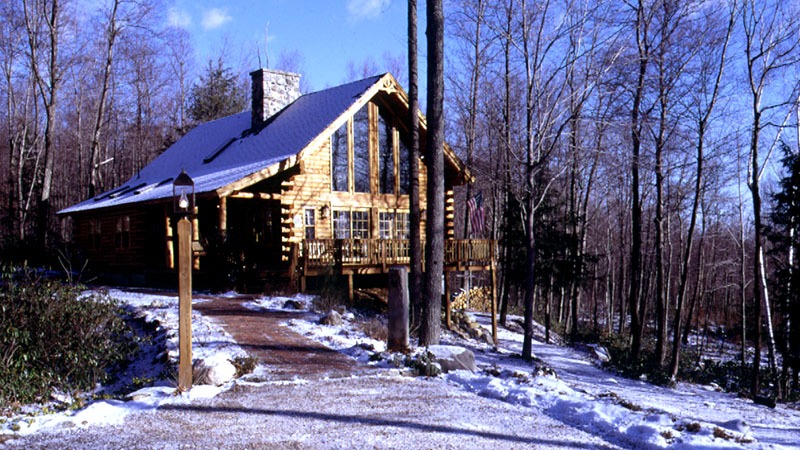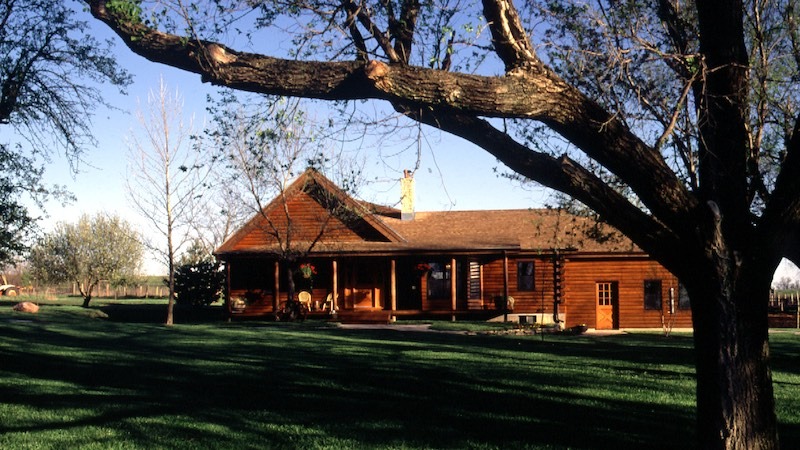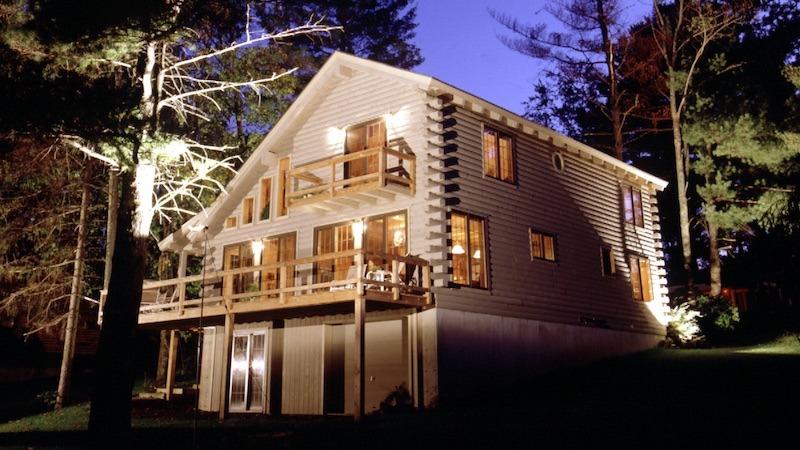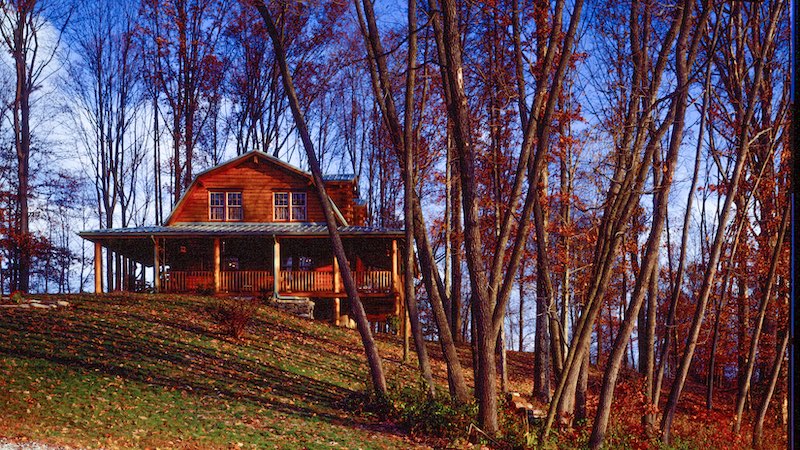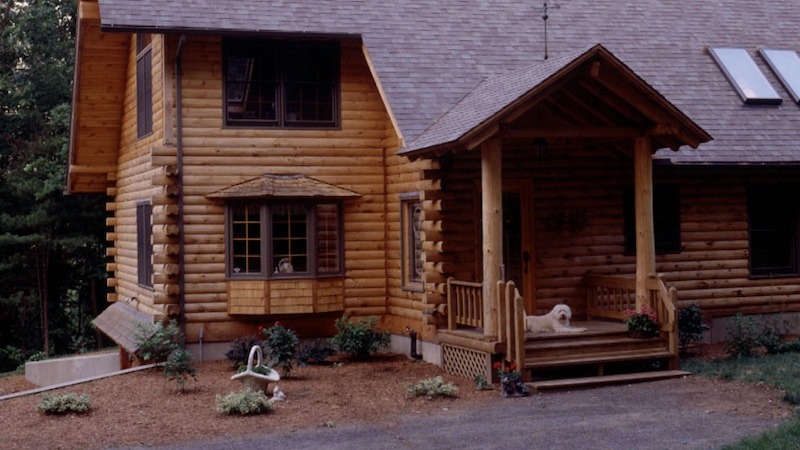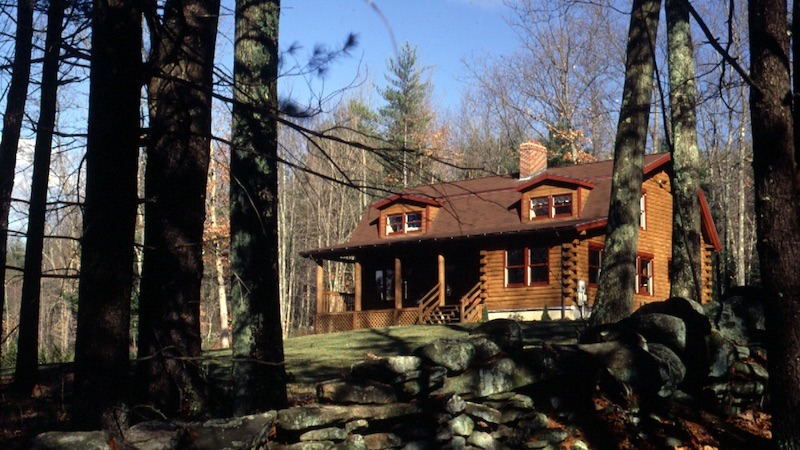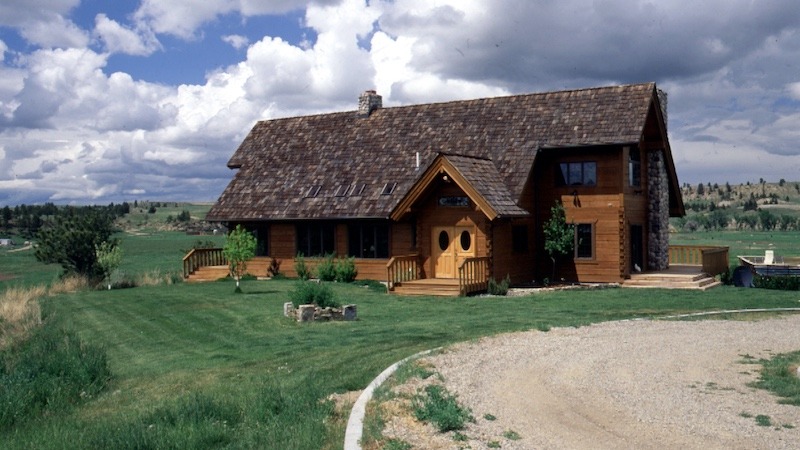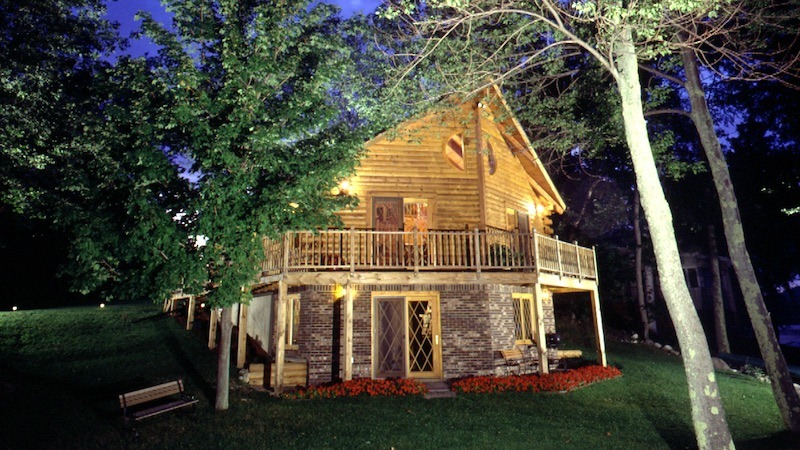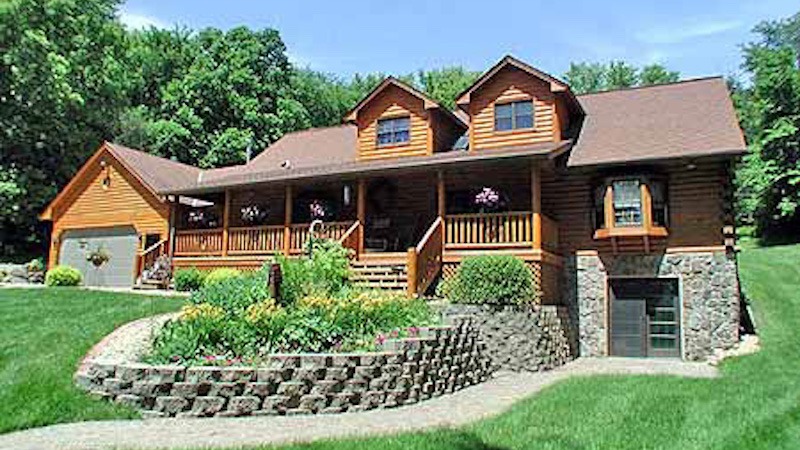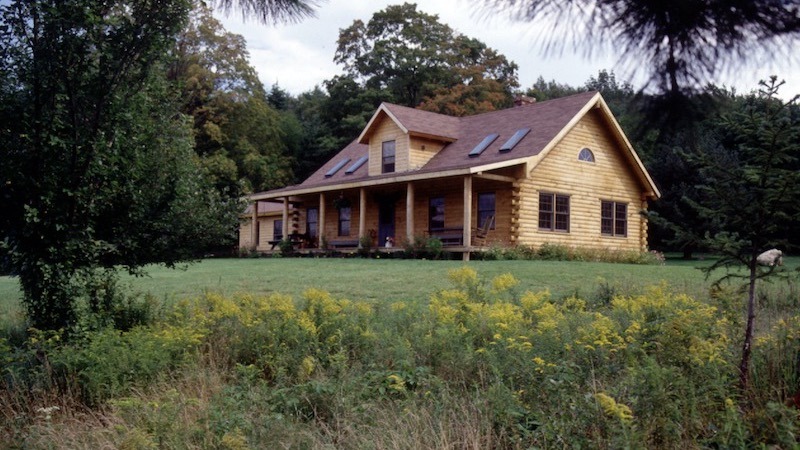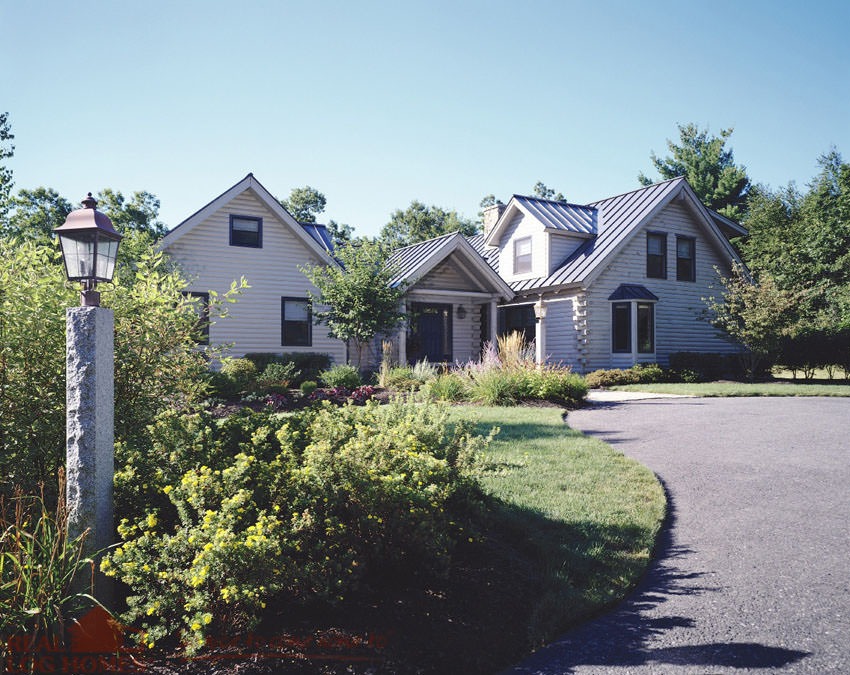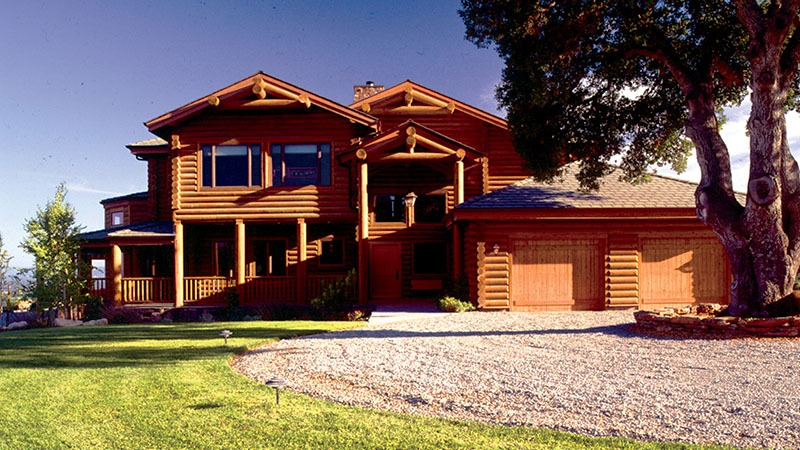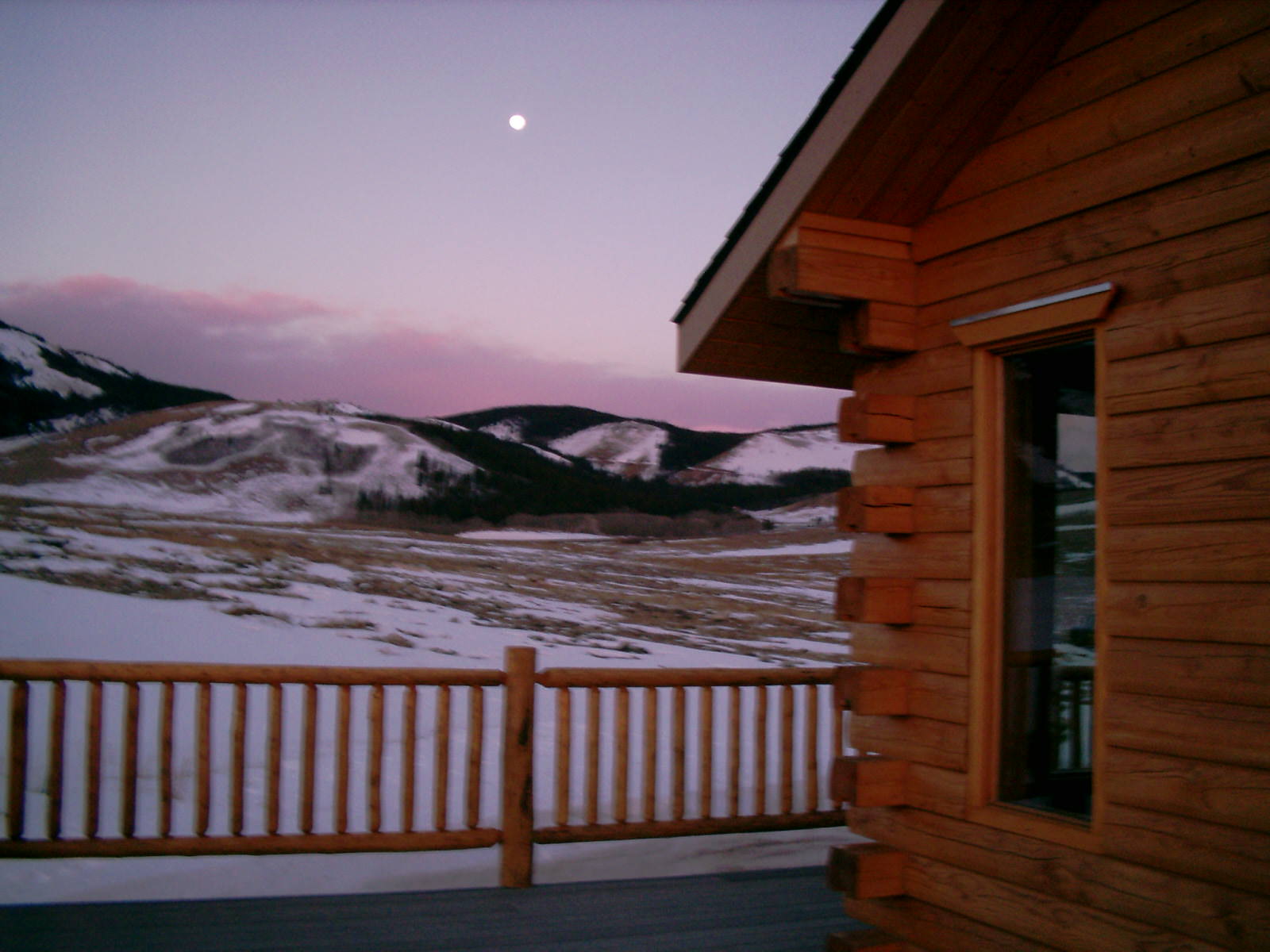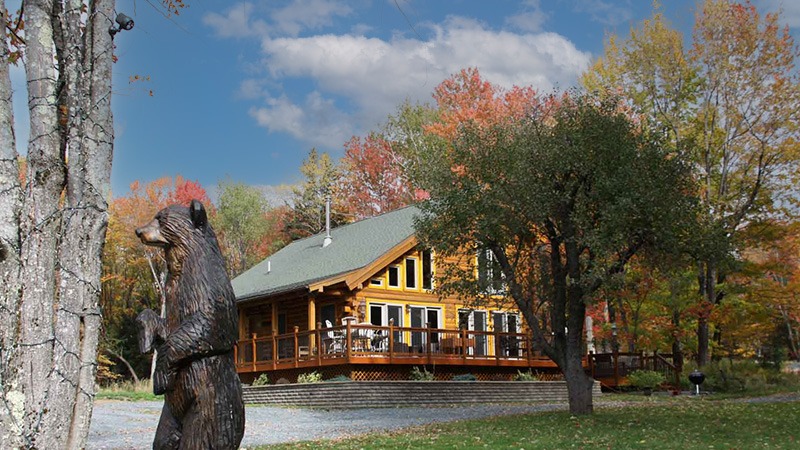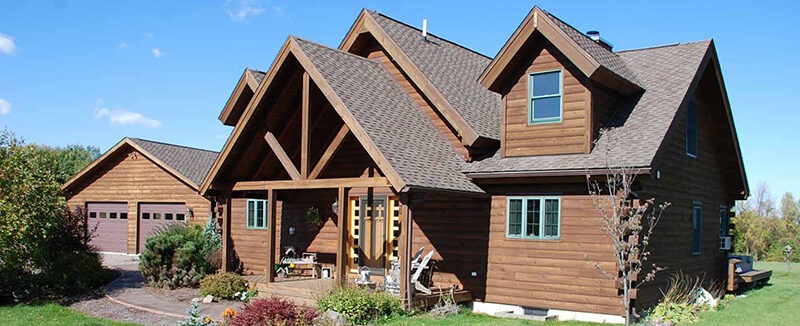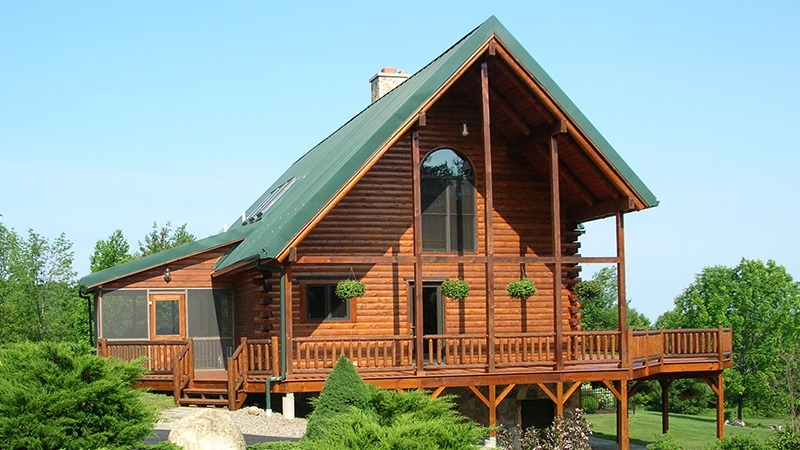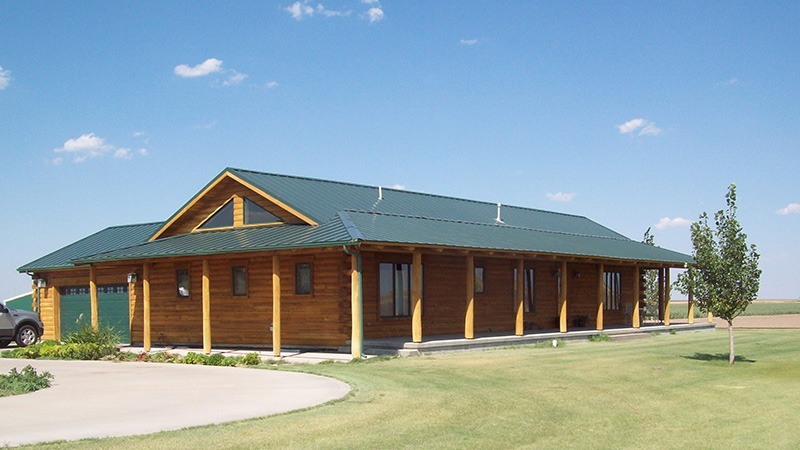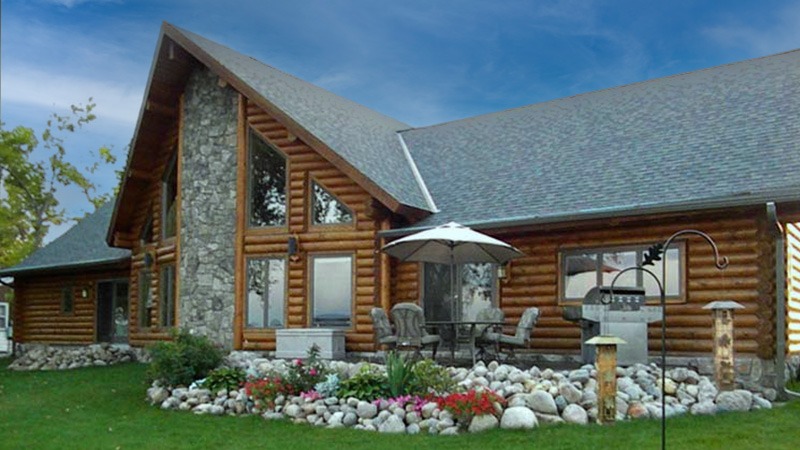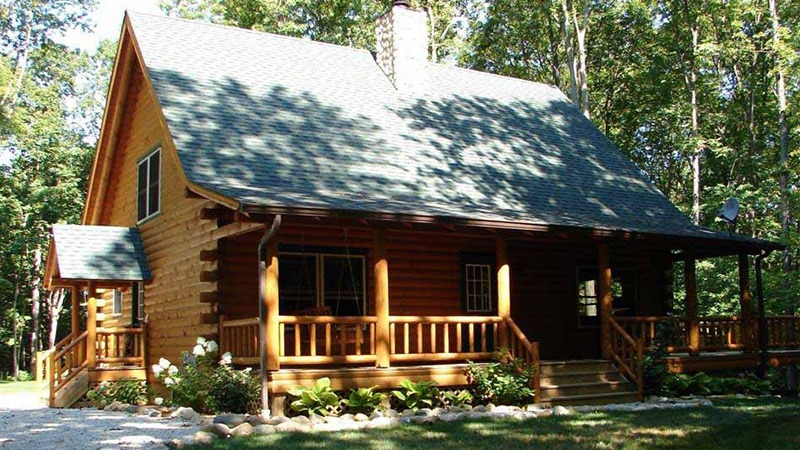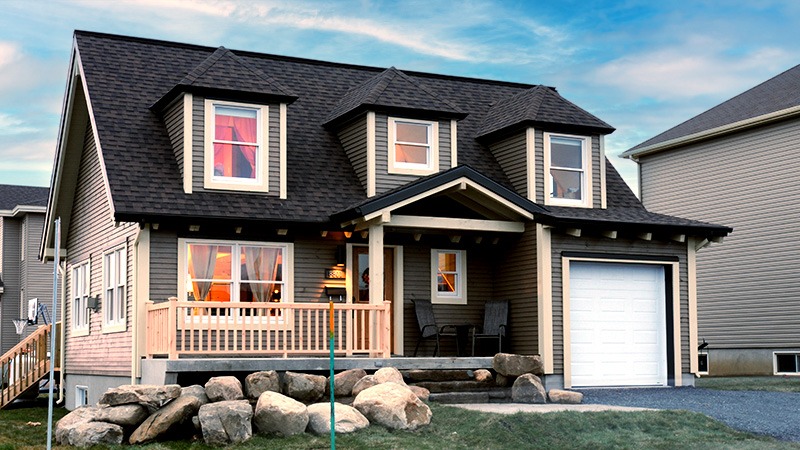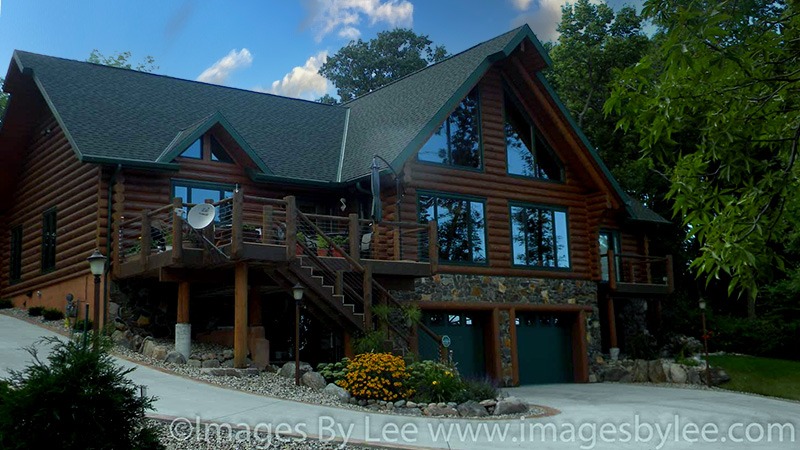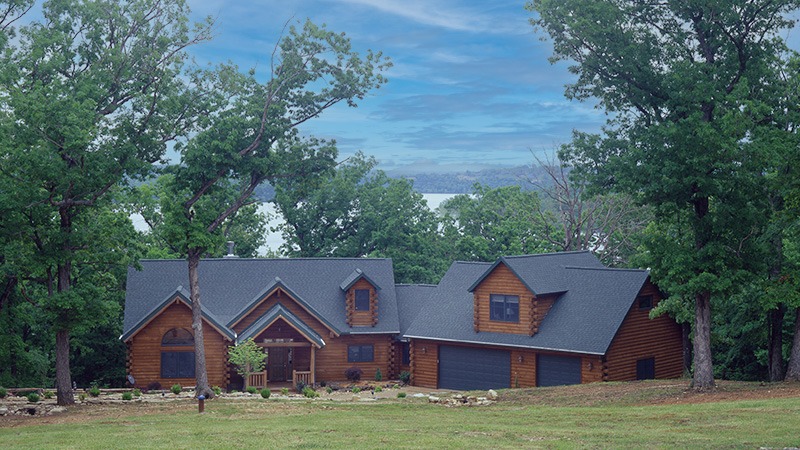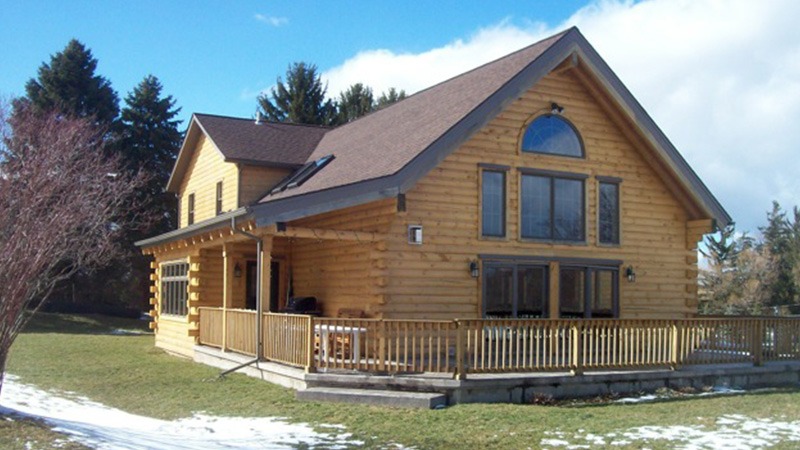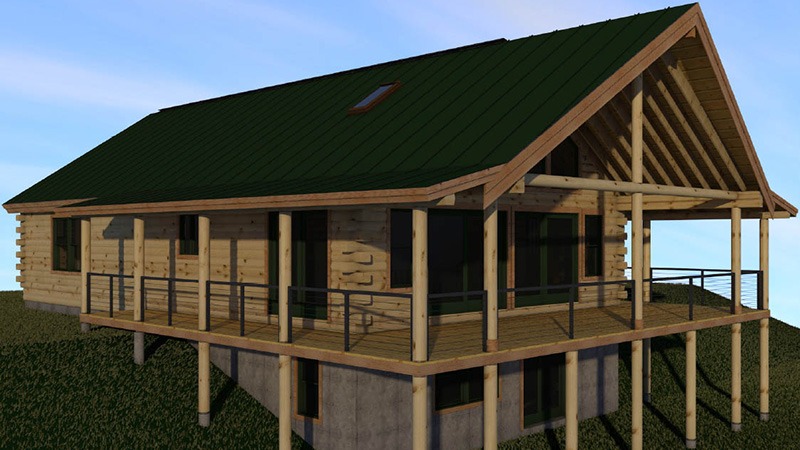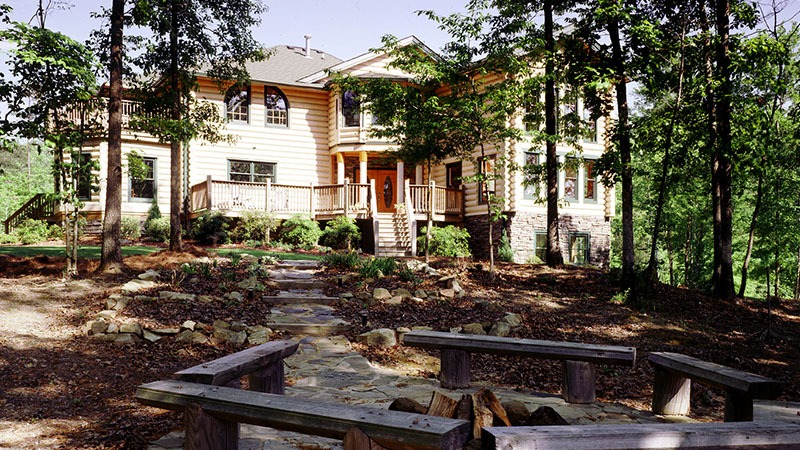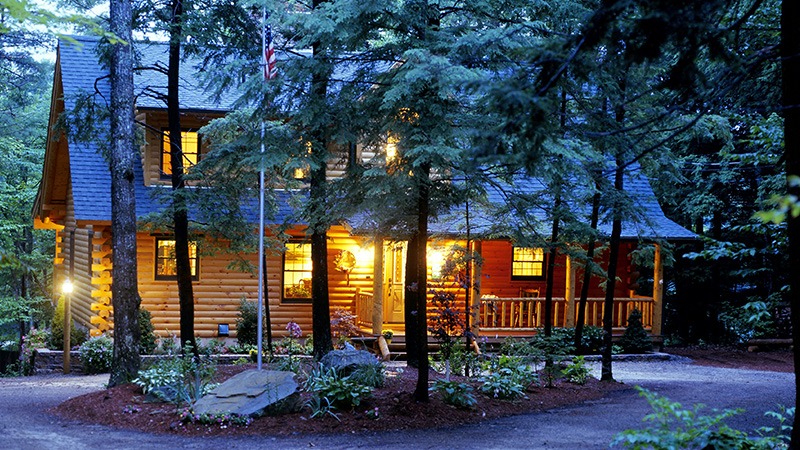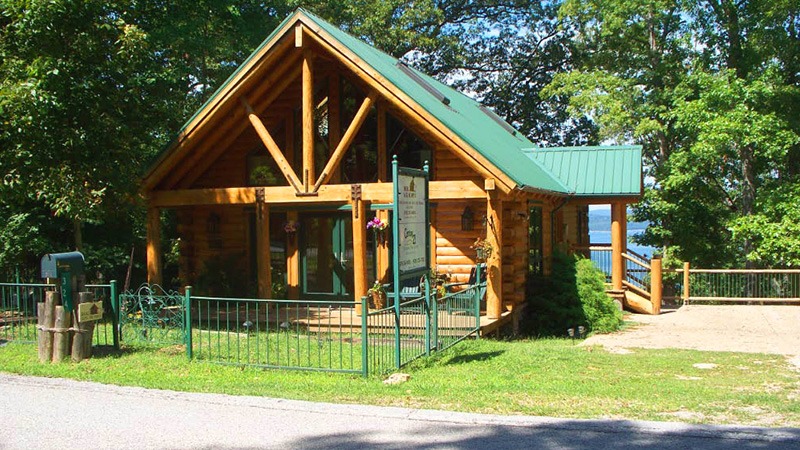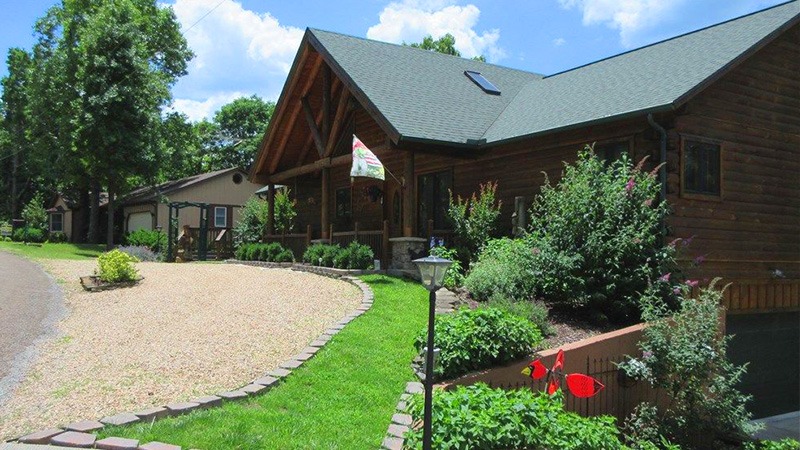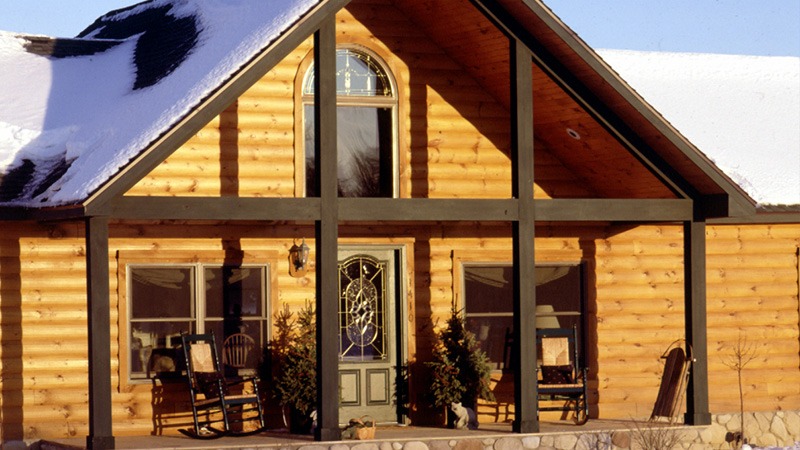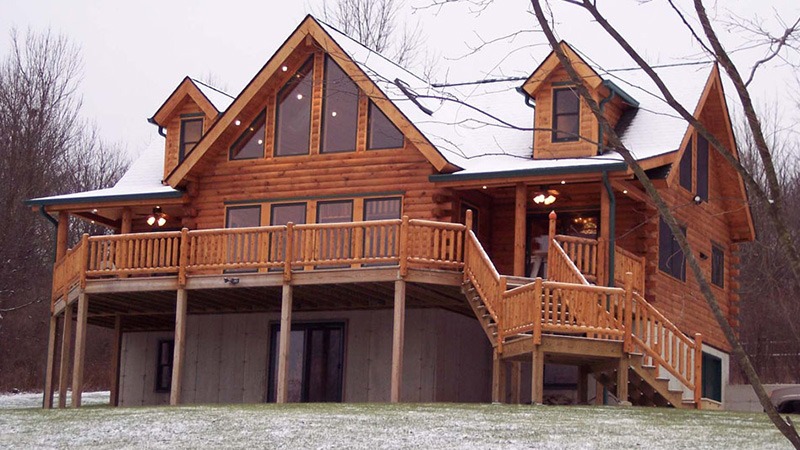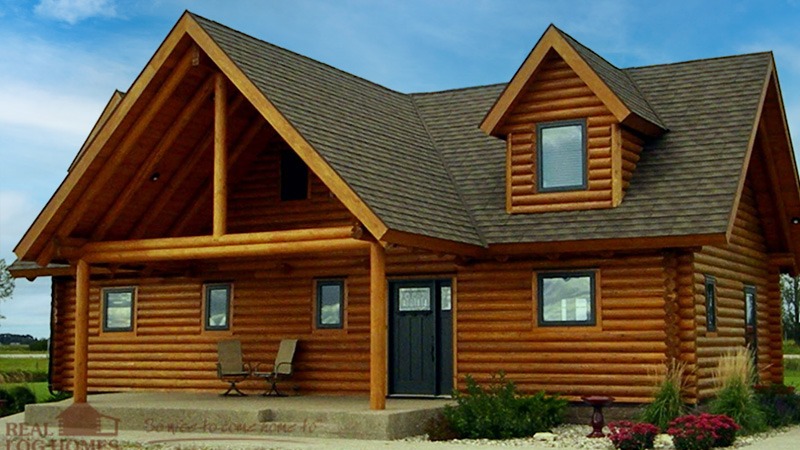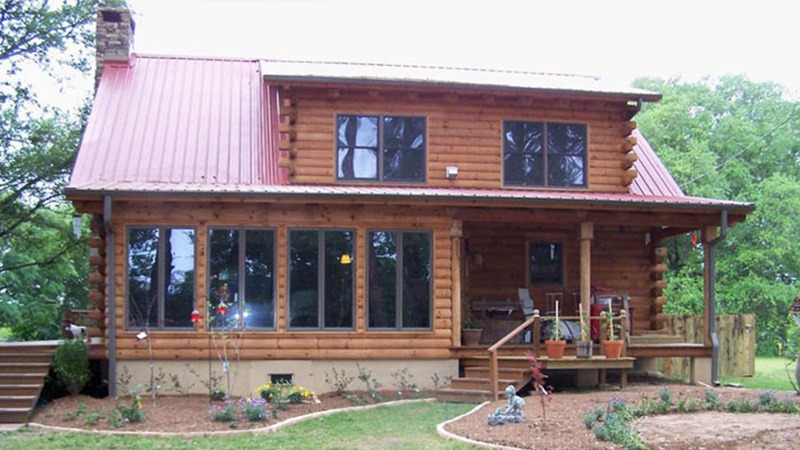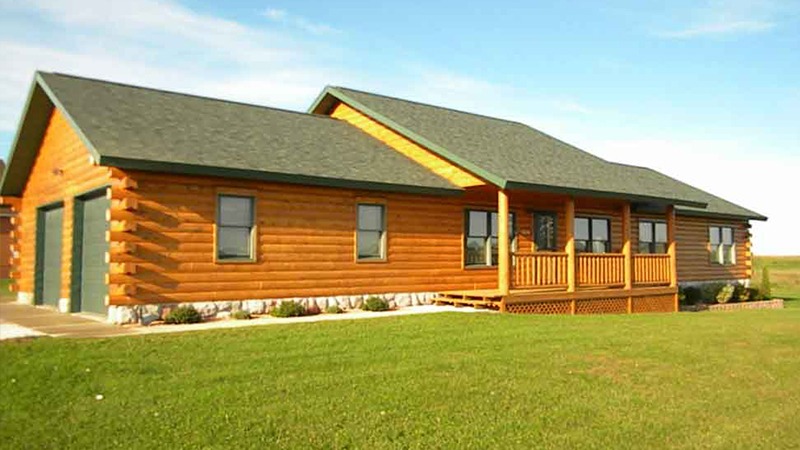Settling seems to be a hot topic recently for our log home fans so we figured an article addressing the issue would help answer any question you might have. In any log home project, the logs will shrink over time, resulting in the home settling. Settling is not a bad thing, it’s natural, and it is not unique to log homes. Even stick-built homes settle. What is important, though, is how your builder or log home manufacturer accounts for and addresses the settling of your log home. With the methods used in a REAL™ Log Home, settling becomes a minor maintenance item.
The cause of settling in a log home is that wood fibers shrink as they dry out. The fibers are cylindrical in shape with their long axis along the log. Since the fibers shrink only in the radial direction, the logs contract in radius as they dry but do not change appreciably in length. For this reason, the walls of a log home will decrease in height over time as the wood fibers shrink. For example, a 9-foot wall may settle anywhere from one-half to four inches over time. The amount of time it takes for this settling depends on the local conditions. It is a common misconception that kiln dried log homes eliminate the need to address settling. Even a log home that has been kiln dried will settle and the log home company and builder should have a plan in place to address this issue. The majority of settling will continue to occur through at least two heating seasons. Depending on your local climate, the final amount of moisture in your logs can vary by up to fifty percent and even the type of home heating you use effects the moisture in your walls. For these reasons, every log homebuilder must accommodate the settling of log walls.
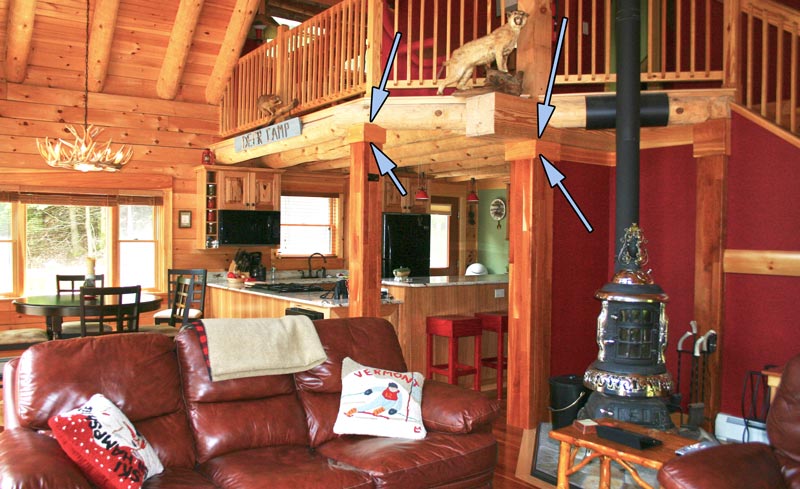
Some log builders like to use rebar within the walls to combat settling. While this prevents the wall as a whole from settling, the logs themselves must still contract, leading to large gaps between the logs that need to be chinked. Since this method can leave unattractive gaps between the logs, we do not use it in Real™ Log construction. Real Log Homes does still offer a chinked wall for customers who like the look, but even in these cases we use our InterLock™ Joinery System, where our logs lock into one another, leading to a smooth appearance.
The two main issues that need to be addressed in a Real Log Home are adjusting the height of posts as the wall settles and maintaining clearances around doors and windows. Since the length of a log does not change as the wood dries, vertical posts supporting the roof or upper floors must be shortened as the walls settle. A screw jack is the most common means used to accomplish this. The screw jack can sit at either the top or bottom of the beam, depending on personal preference. The screw jack can be left exposed as a design element (like the log home kitchen shown above), or it can be enclosed if desired like the first example in this post. A wood frame is commonly used to enclose the screw jack, as are copper details for round log posts.
The screw jacks are adjusted periodically when the home is new – usually about 6-12 months after construction, again after a second full heating season, and some may even be done a third time or more, usually after the heating season. The timing and need for adjusting screw jacks can vary depending on the climate and the type of heating used. Windows and doors are mounted with slip joints, which keep the openings square and true as the wall settles. While these systems require a bit of attention, we find their aesthetic and structural benefits to be the best solution to settling in a log home.
If you have any questions about how a Real Log Home is designed and built, please call Real Log Homes today or fill out the form below for more information.
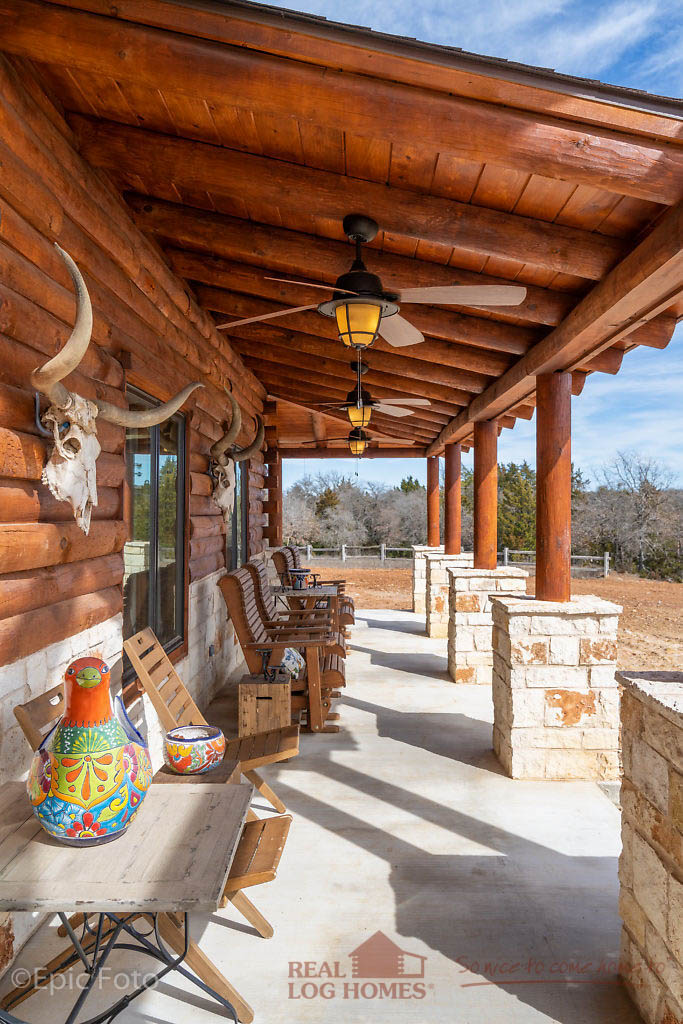
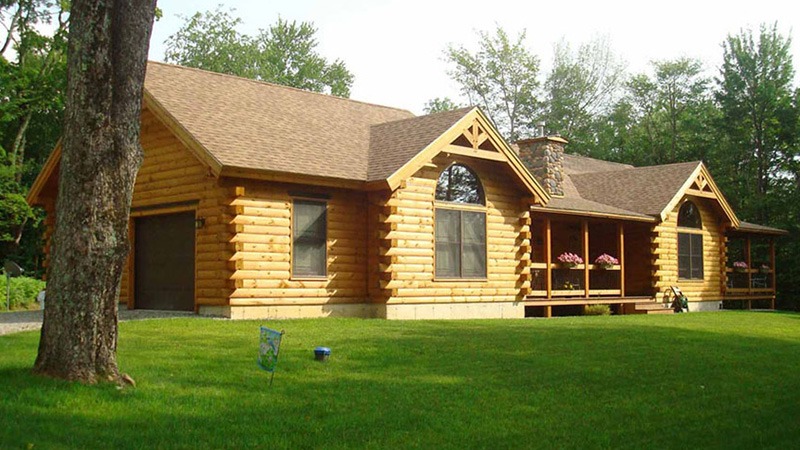
![[KAB-IN] Vermont - Renovated 1972 Real Log Homes Rental Cabin](https://realloghomes.com/wp-content/uploads/2019/03/Cavendish-KAB-IN-Woodstock-VT-51.jpg)
